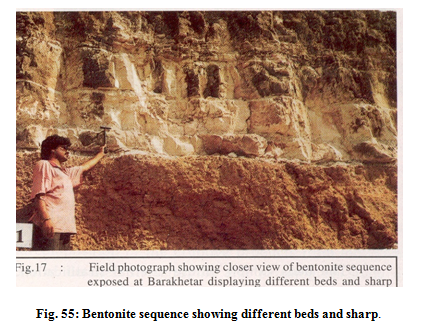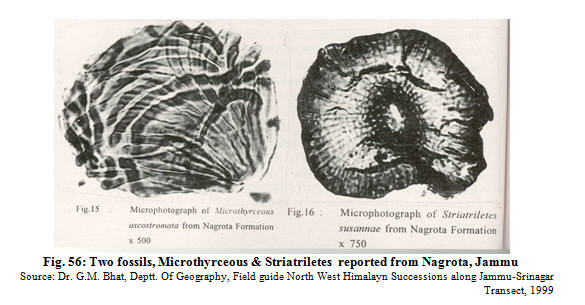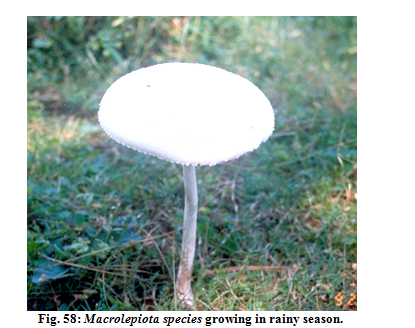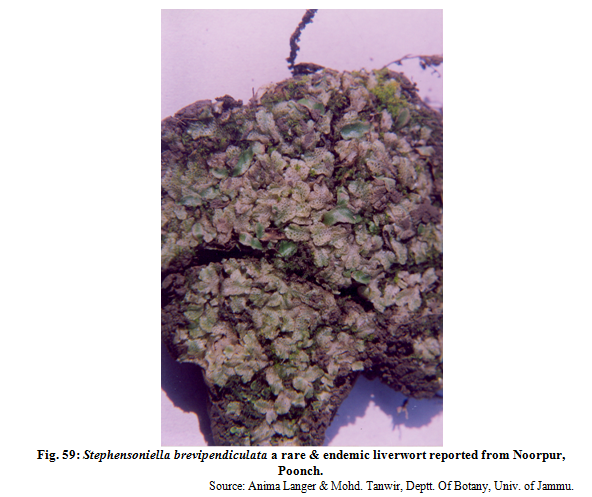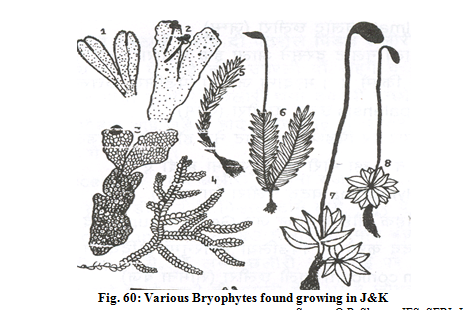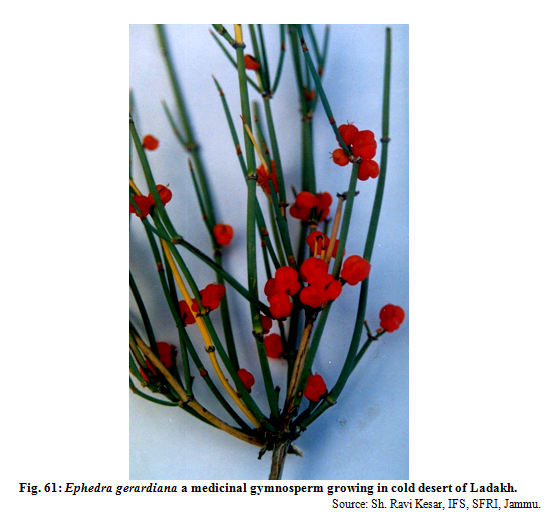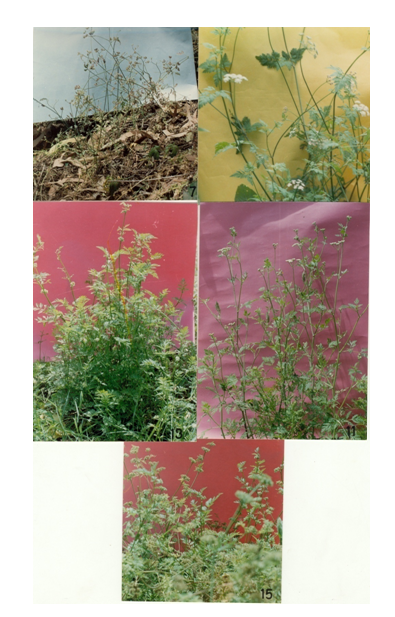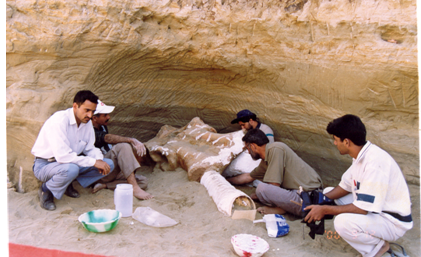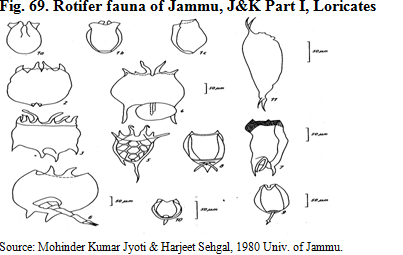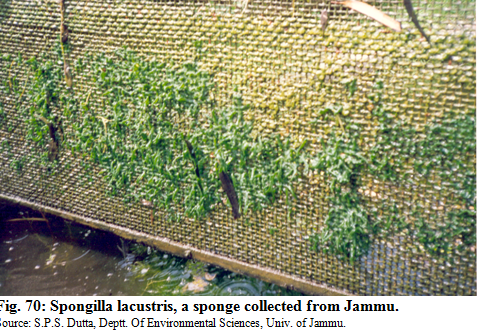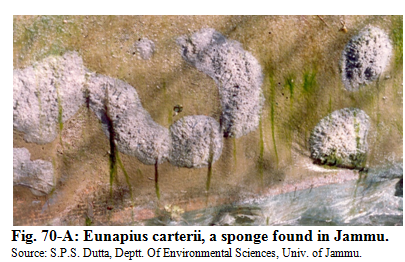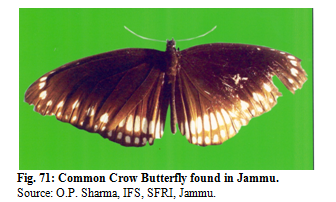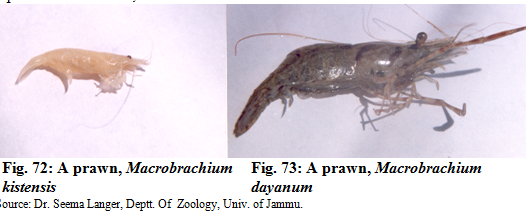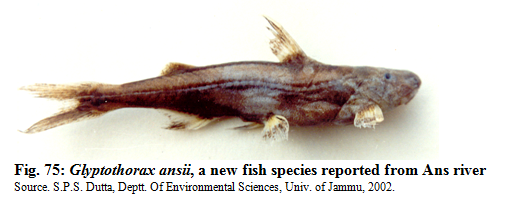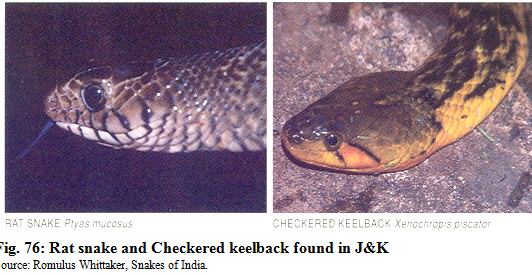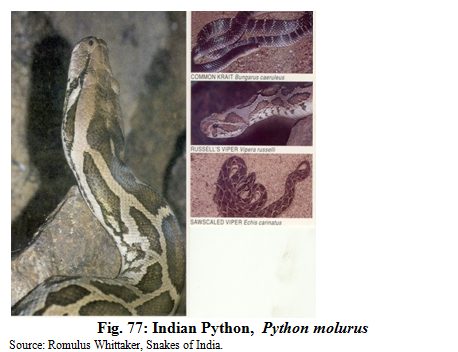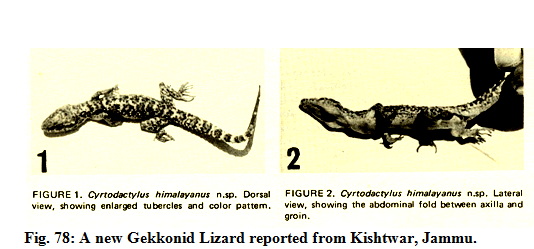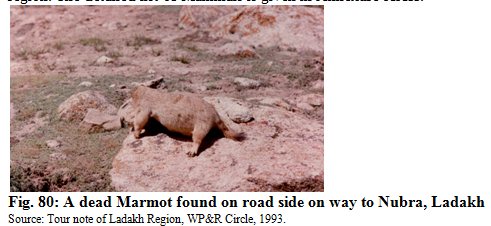Bio-diversity in Jammu, Kashmir, Ladakh: Status Of Biodiversity In J&K
This article has been sourced from an authoritative, official readers who wish to update or add further details can do so on a ‘Part II’ of this article. |
Contents |
The source of this article
Bio-diversity in Jammu, Kashmir, Ladakh
By the Department of Forests, Government of Jammu and Kashmir
Bio-diversity in Jammu, Kashmir, Ladakh: Status Of Biodiversity In J&K
Broadly speaking, Biodiversity of J&K can be categorized into following types of Ecosystems:
1. Biodiversity of Agricultural Ecosystems.
2. Biodiversity of Fresh Water Ecosystems
3. Biodiversity of Forest Ecosystems
4. Biodiversity of Cold Desert Ecosystems.
Wild Biodiversity
All plants and animal forms including microscopic organisms which originated or colonized the available habitats on their own and are thriving without man’s assistance come under the category of Wild Biodiversity. Such life forms are more adopted to local conditions and have the inner resilience to cope with the changing environmental pressures.
Wild Flora of J&K
The perusal of literature on the floristic studies of J&K reveals that Victor Jacquemont (1803-82) was the first botanist to enter the picturesque valley of Kashmir to undertake the floristic study of that time. He collected a large number of plants and his collections were studied by J. Cambessedes & F. Decaisne (1845). W. Morrcraft was the first European to study the plants of Ladakh region.
He also studied the plants of Kashmir valley from 1822 onwards. Godfrey Thomas Vigne (1835) collected 99 specimens from Kashmir and neighbourhood. Falconer, another famous plant collector also made notable collections from Kashmir in 1839. John Forbes Royle sent many collectors to Kashmir during 1833-1839 and published an illustrated account of Kashmir plants in 1839. Thomas Thomson (1848) collected several plants from different parts of the state and data was published in London Journal of Botany Vol. 1 : 68, 1849. Other botanists who ventured into the floristic studies of the Kashmir included Schlagint weit (1855-1877), William Hay (1862), J.L. Stewart (1868) and Handerson & Hume (1873). C.B. Clarke visited Kashmir in 1876 and collected a number of specimens. Duthie (1893-1894) recorded his floristic observations in the Records of Botanical Survey of India.
The first half of the present century witnessed the publication of two important books, B.O. Coventry’s, “Wild Flowers of Kashmir”(1923-30) and E. Blatter’s “Beautiful Flowers of Kashmir” (1927-28). Both these books were known better for their contribution in promotion of popular knowledge than their taxonomic value.
Other notable additions to the floristc studies of the period include the work of Meebold (1909), Keshavanand IFS (1906-08), Steward (1916-1945), Lambert (1933), Blatter(1927), Bamber(1919), Mukerji(1940) and Pennell(1943). Hooker(1872-1897) also described plants of Kashmir in his book, “Flora of British India”. Lambert (1935) listed the forest trees and shrubs of J&K State.
After the reorganization of the Botanical Survey of India, T.A. Rao in 1960 made the first botanical exploration in some parts of the state and account is published in the records of Botanical Survey of India. The explorers of recent times include Kapoor et al (1963, 1986) Y.K. Sarin (1971), Singh and Kachroo (1976) Dhar and Kachroo (1983), Brij Mohan Sharma (1981) who have made contribution towards documentation of various floras of different parts of the State. The recent flora entitled “Flowers of the Himalaya”, by Polunin & Stantion (1984), “Flora of Jammu and Plants of Neighborhood” by B.M. Sharma & P Kachroo (1981), Flora of Trikuta Hills by S.K. Kapoor and Y.K. Sarin (1989), “Flora of Udhampur” (1998) by Ajai Swami & B.K. Gupta and Wild and Cultivated Plants of Jammu, Kashmir and Ladakh by Om. Prakash Vidharthi, IFS (1997) has also contributed towards floristic studies of this State. Some of the notable works in this field are:
Forest Flora of Srinagar and plants of neighborhood by G. Singh & P. Kachroo (1987). 1. The flora of Ladakh by Stewart R.R. (1916-17). 2. Flora of upper Lidder valleys of Kashmir Himalayas by B.M. Sharma & P.S. Jamwal Vol I & Vol II. 3. Flora of Jammu and plants of neighborhood by B.M. Sharma & P. Kachroo (1981). 4. Flora of District Doda of Bachan Lal Whellum & Rani Mangotra (Ph.D. work). 5. In addition to these works in the field of higher plants, exploration and documentation of lower group of plants has also been attempted by various workers and notable works are:
1. Algal Flora of Ladakh by Shashi Kant & Pushp Gupta. (1998).
2. Diversity of Macro fungi of Bhaderwah by Rajkumar Rampal
3. Floristic studies in Bryophytes of Kashmir Himalaya by F.A. Bandey (1997).
4. Taxonomic studies on Hepatic Flora of District Jammu by Sarika Gupta (2002)
5. Hepaticae & Anthocerotae of Jammu Division by Mohd. Tanwir & Anima Langar (Unpublished work).
6. The Hepaticae of Kashmir Valley by S.C. Srivastava (1979).
Based on¬¬ available data (Published and Unpublished) diversity of various plant groups in J&K is represented as under:
Table 26: Plant group wise number of species reported
Group |
Sub Group |
No. of Species reported |
|||
|
<st1:City w:st="on">Jammu</st1:City> Region |
<st1:place w:st="on">Kashmir Region |
Ladakh Region |
J&K |
||
|
Algae |
Cyanophyta Chlorophyta Chrysophyta Bacillariophyta Xanthophyta Dinophyta Euglenophyta Cryptophyta Rhodophyta Charophyta Sub-Total |
13 400 |
054 170 002 163 002 002 013 - - - 406 |
171 440 008 175 015 018 018 001 002 - 848 |
900 |
|
Fungi |
Phycomycetes Ascomycetes Basidiomycetes Deuteromycetes Sub Total |
300 |
023 084 175 140 422 |
11 |
450 |
|
Bryophytes |
Liverworts Hornworts Mosses Sub Total |
66 4 13 83 |
48 - 162 210 |
9 - - 9 |
250 |
|
Pteridophytes |
Ferns |
93 |
93 |
- |
100 |
|
Gymnosperms |
Cupressaceae Ephedracere Ginkgoaceae Pinaceae Taxodiaceae Sub Total |
11 |
04 01
06 01 13 |
3 |
13 |
|
Angiosperms |
Dicots Monocots Sub Total |
1300 |
1590 410 2000 |
880 - 880 |
2403 0651 3054 |
Source: <st1:PlaceType ">University of Jammu & University of Kashmir (Ph.D. & other research documents consulted)
Fossil records
The Pleistocene flora of Kashmir stands described by Puri (1945 to 48) and Mittre (1964). This flora represented 128 modern species spread over 69 genera & 34 families of angiosperms. Three distinct types of flora identified in the valley are:
1. The Liddermarg Flora: This flora comprised mainly of Quercus leucotrichophora and Quercus glauca which are today totally absent in the area. The other prominent species were those of Pinus, Cedrus, Mallotus, Ficus, Acer, Litsaea, Cinnamomum, Machilus, Phoebe, Buxus, Skimmia, Toddalia, Pittosporum, Rhamnus, Berchemia, Myrsine, Syringa, Wendlandia, Pyrus, Cotoneaster, Alnus, Berberis, Cornus, Parrotiopsis, Dermodium, Inula, Acorus, Scirpus, Cyperus, etc. (Puri, 1960, Miltre, 1964).
2. Laredura Flora: In this type of flora both tropical & temperate elements were discovered but tropical species were predominant. Main tropical species recorded are Woodfordia fruticosa, Mallotus philippenensis, Engelhardtia colebrookiana, Odina woodier & Olea cuspidata.
3.Temperate species include Ulmus wallichiana, Quercus semicarpifolia, Quercus dilatata, Quercus ilex, Betula alnoides, Betula utilis, Acer caesium, Acer villosum, Berberis lycium and Conifer Genera like Pinus, Cedrus & Abies (Puri & Mittre, 1960, 64) Temperate species are still existing in the valley but sub-tropical Geneva like Mallotus, Woodfordia, Myrsine, Engelhardtia & Olea are non-existent today and this supports the view that Liddermarg flora developed under tropical conditions.
3. Ningal Nullah Flora: This flora was usually represented by forms like poplars, willows, cherries, walnuts, maples, elms, elders with an abundance of spruce, silver fir, pine & cedar (Puri et al 1983). Various `modern representatives of these plants still flourish in the Valley and occupy an altitudinal zone between 2100 m & 3000 m on the Northern side of the Pir-Panjal. This indicates that at least in this part of Kashmir, there persisted temperate climate during the pleistocene.
4.The earliest flora reported from J&K is from Early Carboniferous of Kashmir (Liddar Valley, Banihal) to late pleistocene (Siwalik Strata of Jammu), Karewas of Kashmir. The state of J&K is endowed with rich fauna ranging in age from Cambrian to recent fauna include both invertebrates and vertebrates.
A number of publications reporting fauna and flora from the state are available in the records of Geological Society of India and Professional Research Journals of National and International status. The records and research journals are available with GSI and Geology Department, University of Jammu, Jammu. The Departments hosts a record of research publications of last 150 years.
Source: Dr. G.M. Bhat, Deptt. Of Geography, Field guide North West Himalayn Successions along Jammu-Srinagar Transect, 1999
Recent contribution on invertebrate fauna from the state is those of GSI workers, University of Jammu and Wadia institute of Himalayan Geology. The vertebrate fauna reported from the state is mostly from Shiwalik and Karewas strata. The contributions include those of D.N. Wadia, GSI workers, Scientists of Wadia Institute of Himalayan Geology, ONGC and University of Jammu.
Bhat and his co-workers have also reported flora from Lidder valley and Margan pass which is the earliest known flora from the Himalaya (early carboniforous may be U. Silurian). Other reports on flora from J&K state are those of Gangomopteris and Glossoopteris from Zewan and Nishatbagh beds of Kashmir.
Most important vertebrate faunal localities include Ram Nagar (Udhampur), Uttarbani area in Jammu. Karewa beds at Pampore, Shopian, Hirpura, Pattan, etc. These localities have a great potential for fossil fauna and need to be explored.
The type localities for fossil flora include Lidder valley Banihal area, Gulabgarh pass and Nishatbagh and Zewan beds. Siwalik and karewa beds also yield micro fauna and flora. Faculty of the Departments of Geology, University of Jammu is actively engaged in its exploration. They include Prof. G.R. Prasad (micro vertebrates), Dr. M.A. Malik (Micro-invertebrate fauna), Bhat, G.M. and co-workers (micro flora).
Cambrian fossils of Kashmir: Trilobites and Brachiopods, pteropod hyolithes and cysted eucystites.
Ordovician-Silurian fauna: Brachiopods and crinoids, corals and strophomenids. Carboniferous fossils: Brachiopods, Bryozoans, Trilobites, Lamellibranchs, (Flora: Pteridophytes, Gangomopteris beds, Glossopteris,) Amphibian, Archegosaurus ornatus and Fishes - Amblypterus kashmirensis and A. symmetricus.
Fossil Plants: These have been obtained from Liddar valley, Gulabgarh pass, Gulmarg, Khunamuh and Resin Spores, Nagmerg, Bryozoa, Corals and Brachiopods.
Triassic fossils of Kashmir: Ammonoids, (Meekoceras, ophioceras, otoceras,) Lamellibranchs, Brachiopods.
Jurassic: Ammonites, Beleminites, Lamellibranch and Brachiopods.
Cretaceous: Foraminifera, Gastropods and Corals.
Tertiery: Karewas: Representatives of Molluscs and some plants, Elephas, Rhinoceras, Bovids and Mammothus. Birds, Fish and Plants.
Siwalik: Representatives of Equidae, Rhinoceratidae, Suidae, Giraffidae, Bovidae, proboscidea, Anthracotheridae, Hippopotamidae, Primates, stand reported.
The Muree structural formation which is exposed around Patnitop-Batote area represents sandstones, slates, shales and claystones. A bed found in this belt called Larea bed is lenticular with a Palkhai Syncline. The fauna collected consist of 2 fragments of ridge crest of Probo-scidean molar and a dozen species of Lammelli-branches (Khan et al, 1971) which include Nucula, Acila, Nuculana, Mytilus, Unio, Tellina, Apolymetis, Solecurtus, Venus, Meretrix, Pitar, Pholadomya, Lyonsia sp. & Thracia species.
Microflora obtained from Nagrota formation i.e. upper Shivalik sediments exposed at Bantalab-Jammu Byepass road reveals a total of 24 genera and 30 species of Gymnospermous and angiospermous pollen, pteridophytic spores, fungal spores & conidia (Sarkar & Bhat, 1998).
The distributional pattern of spores & pollen grains in the Bantalab upper Shivalik Succession indicates the presence of stagnant fresh water conditions in view of high incidence of Zygospores of Zygnema and Spirogyra.
The presence of Microthyraceous ascostromata indicates a warm and humid climate having rain forest type of vegetation. Occurrence of aquatic pollen grains belonging to Lotus & Typha family as well as pteriodophytic spore Striattriletes suggest a swampy environment in the area.The geological history of the Kashmir Valley has experienced the upliftment of the present Pir Panjal range by about 2000 m to keep the mansoon influences away from present Kashmir (Wadia, 1961). The pre-historic Satisar lake silted up and water was drained off leaving behind remanants in the form of present day lakes like Dal, Manasbal and the Wular. The Karewas lie in isolated tracts and at depths below 300 m having remains of pleistocene age. During ice-age valley experienced several periods of extreme cold alternating with warm periods culminating into the temperate flora of the Kashmir valley.
The Pleistocene flora of Kashmir stands described by Puri (1945 to 48) and Mittre (1964). This flora represented 128 modern species spread over 69 genera & 34 families of angiosperms. Three distinct types of flora identified in the valley are:
4. The Liddermarg Flora: This flora comprised mainly of Quercus leucotrichophora and Quercus glauca which are today totally absent in the area. The other prominent species were those of Pinus, Cedrus, Mallotus, Ficus, Acer, Litsaea, Cinnamomum, Machilus, Phoebe, Buxus, Skimmia, Toddalia, Pittosporum, Rhamnus, Berchemia, Myrsine, Syringa, Wendlandia, Pyrus, Cotoneaster, Alnus, Berberis, Cornus, Parrotiopsis, Desmodium, Inula, Acorus, Scirpus, Cyperus, etc. (Puri, 1960, Mittre, 1964).
Fig. 57: Plant fossil reported from Arbal near Banihal. Source: Dr. G.M. Bhat, Deptt. Of Geography, Field guide North West Himalayn Successions along Jammu-Srinagar Transect, 1999
5.Laredura Flora: In this type of flora both tropical & temperate elements were discovered but tropical species were predominant. Main tropical species recorded are Woodfordia fruticosa, Mallpic otus philippensis, Engelhardti, Colebrookia, Odina woodier & Olea cuspidata. Temperate species include Ulmus wallichiana, Quercus semicarpefolia, Quercus dilatata, Quercus itex, Betula alnoides, Betula utilis, Acer caesium, Acer villosum, Berberis lycium and Conifer Genera like Pinus, Cedrus & Abies (Puri & Mittre, 1960, 64) Temperate species are still existing in the valley but sub-tropical Geneva like Mallotus, Woodfordia, Myrsine, Engelhardtia & Olea are non-existent today and this supports the view that Liddermarg flora developed under tropical conditions.
6.Ningal Nullah Flora: This flora was usually represented by forms like poplars, willows, cherries, walnuts, maples, elms, elders with an abundance of spruce, silver fir, pine & cedar (Puri et al 1983). Various `modern representatives of these plants still flourish in the Valley and occupy an altitudinal zone between 2100 m & 3000 m on the Northern side of the Pir-Panjal. This indicates that at least in this part of Kashmir, there persisted temperate climate during the pleistocene.
7.Thus during the successive stages in the phytogeographical evalution of Kashmir valley since early quaternary as a result of repeated cooling & warming of climate in the pleistocene times together with a cycle of organic movements, the original vegetation got transformed from a sub-tropical type with typical Oak-Laurel community to the present temperate type with pine-deodar-silver fir-cherry-horse-chestnut community and in the process Oak, laurel-chir communities vanished.
Existing Floristic diversity
Algal flora – Algal taxonomic studies in J&K state can be traced back to 1930, when Bhatia initiated the study on freshwater Rhizopods and Flagellates from Kashmir followed by Bharadwaja (1936), Mishra (1937) and Randhwa (1942, 1948) who also contributed towards algal taxonomy in this part of the country. Subba Raju’s notable contribution about the algal flora of Kashmir came in 1963. Saxena & Venkateswarlu (1968) also contributed significantly regarding Desmids of Kashmir. Subsequent efforts by Kant & Kachroo (1971 to 1977), Kachroo (1983), Kant & Anand (1978), Khan & Zutshi (1979), Zutshi & Vass (1977), Kant & Raina (1985) and Kant & Sodhi (1976) also contributed towards documentation of algal elements in the state.
Available records reflects that about 800 species of algae stand reported from various region of state. The Chlorophyceae i.e. green algae forms the largest groups with over 440 species and the Rhodophyceae i.e. red algae is the smallest group with only two representatives in this state. Diatoms and blue-green algal forms are also predominantly represented in various waterbodies having 266 and 171 species respectively (Kant & Vohra, Kant & Gupta).
Work on Charophytes started with the discovery of Lychnothamnus barbatus from Surinsar lake by Kant & Sodhi (1976). During the subsequent explorations regarding the occurrence of Charophytes in Jammu region, V.K. Anand & Gayatry Langer recorded 13 species of Charophytes belonging to 3 genera of Nitella (4), Lychnothamnus (1) and Chara (8). The algae of Ladakh has been extensively studied by Shashi Kant & Pushp Gupta and the findings stand incorporated in their book, “Algal Flora of Ladakh” 1998. In this book, total number of 848 species stand described. Classwise record of new species, varieties, forms and combinations are tabulated as under :-
Table 27: New species, varieties, forms & combinations of Algae reported from Ladakh
|
S. No. |
Class |
Species |
Varieties |
Forma |
Combinations |
|
1. |
Blue green algae |
1 |
– |
– |
– |
|
2. |
Green algae |
16 |
22 |
2 |
6 |
|
3. |
Diatoms |
14 |
10 |
– |
– |
|
4. |
Red algae |
1 |
– |
– |
– |
|
|
Total |
32 |
32 |
2 |
6 |
Source: Algal Flora of Ladakh by S. Kant & Pushp Gupta.
Detailed list of the new species is given under the heading “New records of plants in Jammu & Kashmir”. The detailed list of algal species is at Annexure-II
Mycoflora : Notable contributions in the field of fungal-floral of J&K stand made by D. Ganguly & V.R. Pandotra (1962, 1963, 1964, 1966), T.N. Koul (1957, 1959, 1960, 1961 & 1962), B.B. Mundkar (1944), G.N. Qasba & A.M. Shah (1979, 1980, 1981, 1982), L.E. Wehmeyer (1963, 1964), Raj Kumar Rampaul, Yash Paul Singh & Geeta Sumbli (1998) and Y.P. Sharma (1999-2000). More than 400 species of microscopic and macroscopic fungi stands documented by various workers.
Studies on mycoflora associated with pre-harvest and post-harvest of various rosaceous fruits like quince (Cydonia oblonga), Indian jujube (Ziziphus mauritiana), sweet cherry (Prunus aviurn), plum (Prunus domestica), apple (Malus pumila), crab apple (Docynia indica) and pear (Pyrus communis) stand carried out in Mycology and Plant Pathology Laboratory, Department of Botany in Jammu University by various workers like Geeta Sumbli, Yash Paul Sharma (1977), Yash Paul Singh (2001), Rozy Bamba (2001), Kusum Badyal, Suresh Sharma, Shallu Samyal etc. Sanjana Kaul & Geeta Sumbli (1997 & 2000) has also worked on Keratinophilic fungi collected from poultry farm soils and Indian poultry birds in Jammu. These workers have reported many new records of mycopathogens from different pome fruits. Detail is given in the table as under:
Table 28: New records of mycopathogens found in stored pome fruits at <st1:City w:st="on"><st1:place w:st="on">Jammu</st1:City> Wholesale Market (Yash Paul Singh & Geeta Sumbli, 2000).
|
Pome fruits |
Mycopathogens reported |
|
Apple |
Aspergillus niveus A. sydowi Emericella nidulans Fusarium proliferatum Penicillium chrysogenum P. citrinum P. crustosum P. miniotuteum P. purpurogenum Trichoderma pseudokoningii |
|
Pear |
Fusarium verticellioides Pencillium chrysogenum P. citrinum P. minioluteum P. pinophilum |
|
Crab apple |
Alternaria alternata Botrytis cineraea Exosporiella fungosum Fusarium proliferatum Fusarium verticillioides Geotrichum candidum Penicillium chrysogenum Rhizopus stolonifer Trichothecium roseum |
Source: Dr. Geeta Sumbli, Pathology laboratory, Deptt. Of Botany, Univ. of Jammu.
Earlier workers who have contributed towards exploration and documentation of macro fungi in J&K are Murill (1924), Kaul & Kachroo (1974), Kaul et al. (1978), Abraham et al. (1980, 1981, 1984), Watling (1980), Watling & Gregory (1980) and Watling & Abraham (1986).
Raj Kumar Rampal in his Ph.D. thesis titled, “Ecological Studies on the Macrofungi of Bhaderwah Forests, Jammu (J&K)” submitted to University of Jammu, has enlisted 80 species of macro-fungi growing in different ecological sites under high altitude coniferous forests of Bhaderwah. Detail of various species alongwith habit, altitude and edibility is given in the table :
Table 29: Habitat and distribution of Macro fungii reported from Bhaderwah
Name |
Habit |
Altitude |
Distribution |
Remarks |
|
A. macrosporus |
Humicolous |
6000-7000 |
Bhaderwah |
New for <st1:country-region w:st="on">India |
|
Agrocybe pediades |
Humicolous |
6000-7000 |
Bhaderwah |
--- |
|
Amanita flavoconia |
Humicolous |
6000-7000 |
Bhaderwah |
New for J&K |
|
A. pantherina |
Humicolous |
6000-7000 |
Bhaderwah |
--- |
|
A. vaginata |
Humicolous |
6000-7000 |
Bhaderwah |
Edible |
|
Asterophora lycoperdioides |
Parasitic |
6000-6500 |
Bhaderwah |
--- |
|
Astraeus hygrometricus |
Humicolous |
6000-7000 |
Bhaderwah |
--- |
|
Bolbitus vitellinus |
Coprophilous |
6000-6500 |
Bhaderwah |
New for J&K |
|
Bovista plumbea |
Humicolous |
6000-7000 |
Bhaderwah |
Edible |
|
Calvatia caelata |
Humicolous |
6000-7000 |
Bhaderwah |
Edible |
|
C. elata |
Humicolous |
6000-7000 |
Bhaderwah |
Edible |
|
Cantharellus cibarius |
Humicolous |
6000-7000 |
Bhaderwah |
Edible |
|
C. infundibuliformis |
Humicolous |
6000-7000 |
Bhaderwah |
Edible |
|
Chalciporus piperatus |
Humicolous |
6000-7000 |
Bhaderwah |
Edible & new for J&K |
|
Clavaria vermicularis |
Humicolous |
6000-7000 |
Bhaderwah |
Edible |
|
Coltricea montegneii |
Humicolous |
6000-7000 |
Bhaderwah |
|
|
C. perennis |
Lignicolous |
6000-7000 |
Bhaderwah |
--- |
|
Conocybe pilosella |
Humicolous |
6000-7000 |
Bhaderwah |
New for J&K |
|
C. tenera |
Humicolous |
6000-7000 |
Bhaderwah |
New for J&K |
|
Copelandia cyanescens |
Coprophilous |
6000-6500 |
Bhaderwah |
New for J&K |
|
Coprinus atramentarius |
Humicolous |
6000-7000 |
Bhaderwah |
Edible |
|
C. comatus |
Humicolous |
6000-7000 |
Bhaderwah |
Edible |
|
C. plicatilis |
Humicolous |
6000-7000 |
Bhaderwah |
--- |
|
Crucibulum leave |
Lignicolous |
6500-7000 |
Bhaderwah |
New for J&K |
|
Fomes sp. |
Humicolous |
6000-7000 |
--- |
--- |
|
F. ulmarius |
Lignicolous |
6000-7000 |
Bhaderwah |
--- |
|
Gamoderma lucidium |
Lignicolous |
6000-7000 |
--- |
--- |
|
G. resinaceum |
Lignicolous |
6000-7000 |
--- |
--- |
|
Geastrum drummondii |
Humicolous |
6000-7000 |
Bhaderwah |
New for J&K |
|
G. fimbriatum |
Humicolous |
6000-7000 |
Bhaderwah |
New for J&K |
|
G. pectinatum |
Humicolous |
6000-7000 |
Bhaderwah |
New for J&K |
|
G. triplex |
Humicolous |
6500-7000 |
Bhaderwah |
--- |
|
G. velutinum |
Humicolous |
6000-7000 |
Bhaderwah |
--- |
|
Geopora arenicola |
Humicolous |
6000-7000 |
Bhaderwah |
Edible |
|
Geopyxis catinus |
Humicolous |
6000-7000 |
Bhaderwah |
New for J&K |
|
Helvella atra |
Humicolous |
6000-7000 |
Bhaderwah |
Edible |
|
H. crispa |
Humicolous |
6000-7000 |
Bhaderwah |
Edible & new for J&K |
|
H. elastic |
Humicolous |
6000-7000 |
Bhaderwah |
Edible & new for J&K |
|
Hohenbuehelia petaloides |
Lignicolous |
6000-6500 |
Bhaderwah |
Edible & new for J&K |
|
Hydnum repandum |
Humicolous |
6000-7000 |
Bhaderwah |
Edible |
|
Innocybe cinnatula |
Humicolous |
6000-7000 |
Bhaderwah |
--- |
|
I. fastigiata |
Humicolous |
6000-7000 |
Bhaderwah |
--- |
|
I. lanuginosa |
Humicolous |
6000-7000 |
Bhaderwah |
New for <st1:country-region w:st="on">India |
|
Lactarius deterrimus |
Humicolous |
6000-7000 |
Bhaderwah |
Edible |
|
Lentius lepideus |
Lignicolous |
6000-7000 |
Bhaderwah |
Edible |
|
Leucopaxillus giganteus |
Humicolous |
6000-7000 |
Bhaderwah |
Edible |
|
Lycoperdon perlatum |
Humicolous |
6000-7000 |
Bhaderwah |
Edible |
|
L. pusillum |
Humicolous |
6000-7000 |
Bhaderwah |
--- |
|
Lycoperdon pyriforme |
Humicolous |
6000-7000 |
Bhaderwah |
Edible |
|
L. pusillum |
Humicolous |
6000-7000 |
Bhaderwah |
--- |
|
Lycopesdon pysiforma |
Humicolous |
6000-7000 |
Bhaderwah |
--- |
|
L. umbrinum |
Humicolous |
6000-7000 |
Bhaderwah |
Edible & new for J&K |
|
Macrolepiota gracilenta |
Humicolous |
6000-7000 |
Bhaderwah |
New for <st1:country-region w:st="on">India |
|
Morchella conica |
Humicolous |
6000-7000 |
Bhaderwah |
Edible |
|
M. deleciosa |
Humicolous |
6000-7000 |
Bhaderwah |
Edible |
|
M. esculenta |
Humicolous |
6000-7000 |
Bhaderwah |
Edible |
|
M. hybrida |
Humicolous |
6000-7000 |
Bhaderwah |
Edible |
|
Otidea leporina |
Humicolous |
6000-7000 |
Bhaderwah |
Edible & new for J&K |
|
Paneolus ater |
Coprophilous |
6000-7000 |
Bhaderwah |
New for J&K |
|
Paxillus penioides |
Lignicolous |
6000-7000 |
Bhaderwah |
--- |
|
Phellodon tomentosus |
Humicolous |
6000-7000 |
Bhaderwah |
--- |
|
Pholiota squarrosa |
Humicolous |
6000-7000 |
Bhaderwah |
Edible |
|
Polyprus arcularia |
Lignicolous |
6000-7000 |
Bhaderwah |
Edible |
|
Psathyrella candolleana
|
Humicolous |
6000-7000 |
Bhaderwah |
--- |
|
Psilocybe corprophila |
Coprophilious |
6000-7000 |
Bhaderwah |
--- |
|
Ramaria apiculata |
Humicolous |
6000-7000 |
Bhaderwah |
Edible |
|
R. flavo-brunnescens |
Humicolous |
6000-7000 |
Bhaderwah |
--- |
|
R. stricta |
Humicolous |
6000-7000 |
Bhaderwah |
Edible & new for J&K |
|
R. vermicularis |
Humicolous |
6000-7000 |
Bhaderwah |
--- |
|
Rhizopogon luteolus |
Humicolous |
6000-7000 |
Bhaderwah |
--- |
|
Rhizopogon rubescens |
Humicolous |
6000-7000 |
Bhaderwah |
Edible |
|
Russula foetens |
Humicolous |
6000-7000 |
Bhaderwah |
Edible & new for J&K |
|
R. krombhozii |
Humicolous |
6000-7000 |
Bhaderwah |
New for J&K |
|
R. pseudodalica |
Humicolous |
6000-7000 |
Bhaderwah |
New for <st1:country-region w:st="on">India |
|
R. quelletii |
Humicolous |
6000-7000 |
Bhaderwah |
New for <st1:country-region w:st="on">India |
|
R. xeremphalina |
Humicolous |
6000-7000 |
Bhaderwah |
New for J&K |
|
Schizophyllum commune |
Lignicolous |
6000-7000 |
Bhaderwah |
Edible |
|
Scleroderma geaster |
Humicolous |
6000-7000 |
Bhaderwah |
New for J&K |
|
S. verrucosum |
Humicolous |
6000-7000 |
Bhaderwah |
Edible & new for J&K |
|
Sepultaria arenosa |
Humicolous |
6000-7000 |
Bhaderwah |
New for J&K |
|
Sparassis crispa |
Humicolous |
6000-7000 |
Bhaderwah |
Edible |
|
Sparassis radiata |
Humicolous |
6000-7000 |
Bhaderwah |
Edible |
|
Strobilinus stephanocystis |
Lignicolous |
6000-7000 |
Bhaderwah |
New for <st1:country-region w:st="on">India |
|
Tramates scabrosa |
Lignicolous |
6000-7000 |
Bhaderwah |
New for <st1:country-region w:st="on">India |
|
Trichatum abiotinum |
Lignicolous |
6000-7000 |
Bhaderwah |
--- |
|
Tyromyces fragilis |
Lignicolous |
6000-7000 |
Bhaderwah |
New for <st1:country-region w:st="on">India |
Source: Dr. Raj Kumar Rampal, Deptt. Of Environmental Sciences, University of Jammu.
Five species of macrosopic ascomycetes has been reported by Shashi Kant & Raj Kumar Rampal (1990) as new records for J&K and they are Geopyxis catinus, Helvella atra, Helvella elastica, Otidea leporina and Septularia arenosa.
Five new records of clavariace reported from Bhaderwah forests (J&K) are Clavaria vermicularis, Ramaria apiculata, Ramaria flavobrunnescens, Ramaria stricta and Sparassis crispa (Shashi Kant & Raj Kumar Rampal, 1991). The detailed list of Fungal Taxa is given in Annexure-III
Bryophytic flora : Among five bryogeographically rich units of Indian sub-continent, Himalayan region is one of the richest area as far as bryophytic wealth is concerned. West Himalayan territory being comparatively more dry has less bryophytic diversity as compared to East Himalayas but this part of region has also a good number of endemics. Various taxa endemic to this region are Radula (4 sp.), Frullania (6 sp.), Cryptomitrium himalayensis, Aitchinsoniella himalayensis, Cyathodium indicum, C. flabellatum, Geocalyx graveolens, Exormotheca tuberifera, Stephensoniella brevipendiculata, P. himalayensis etc. (Srivastava, 1998). This region is also the centre of distribution of Chiloscyphus as maximum diversity exists here.
Out of three regions of the state, only Kashmir has attracted the attention of earlier bryologists like Stephani (1900-1924), Kashyap (1929-1932), Robinson (1965), Kaul & Dhar (1968) and Srivastava (1979). Recently Bandey (1997) has explored the bryophytes of Gulmarg and adjacent regions like Khillanmarg, Tangmarg, Ferozpur, Khagh, Arizal, Poshkaur and Beerwah of Kashmir and collected 63 species including 14 liverworts and 49 mosses. Of these 6 liverworts are new records for Kashmir valley and they include Blepharostoma trichophyllum, Lophocolea bidentata, Marchantia nepalensis, Plagiochila ferruginea, P. spinulosa and Riccardia pinguis. Later, Bandey et al. (1998) enlisted 48 liverworts from Kashmir valley including 25 foliose and 23 thallose forms and reported total absence of hornworts in the valley.
Bryo explorations in Jammu region were started by Om Prakash (1983-84) and he reported 27 liverworts, 2 hornworts and 13 mosses from Jammu plains and Udhampur hills (data unpublished). Mohd. Tanwir (2000) carried extensive survey in tehsil Mendhar of Poonch district and collected 38 taxa of bryophytes (19 foliose and 19 thallose liverworts and 1 hornwort). Tanwir & Langer (2002) added more hepatic taxa to thsi list and now the total number of hepatics from Jammu region has gone upto 70 (data unpublished). Out of this, 13 species reported are rare and endemic to the region and are enumerated as under :-
|
S. No. |
Name of Taxa |
Status |
|
1. |
Metzgeria himalayensis |
Endemic |
|
2. |
M. conjugata |
Extremely rare |
|
3. |
Jungermannia gollani |
Endemic |
|
4. |
Plagiochila woronofii |
Endemic |
|
5. |
Astrella angusta |
Endemic |
|
6. |
A. reticulata |
Rare |
|
7. |
Athalamia pinguis |
Rare & Endemic |
|
8. |
A. pusilla |
Rare & Endemic |
|
9. |
Marchantia kashyapii |
Endemic |
|
10. |
Targionia indica |
Endemic |
|
11. |
Wisnerella denudata |
Rare |
|
12. |
Stephensoniella brevipendiculata |
Rare & Endemic |
|
13. |
Anthoceros bharadwajii |
Endemic |
(Source : After Aneema Langar & Mohd. Tanwir)
Pant (1983) reported a hepatic species as disappearing fast from Nainital. Out of these nine sp. six stand reported from Jammu and these are Athalamia pinguis, Dumortiera hirsuta, Reboulia hemispherica, Stephensoniella brevipendiculata, Wiesnerella denudata and Conocephalum conicum. Other three species reported by Pant from Nainital are Cryptomitrium himalayensis, Fossombronia himalayensis and Sewardiella tuberifera and these awaits discovery from this region. The detailed list of Bryophytes is given in Annexure-IV. Pteridophytic flora : Many workers including Clarke (1880), Hope (1903), Stewart (1945, 1957, 1982), Bir (1964), Bir & Trikha (1968, 1976), Bir et al. (1980, 1985), Dhir (1980), Dixit (1984), Dixit & Das (1979), Gupta (1962), Khullar & Sharma (1980), Mahabale (1962), Satija et al. (1983) and Fraser Jankeins (1984) have made notable contributions in the field of pteridophytic flora of India including Jammu & Kashmir. In Jammu & Kashmir, Javeid (1965) explored ferns and fern allies of Srinagar and Kapoor & Sarin (1977, 1982) made some contribution with regard to ferns of Jammu particularly Trikuta Hills. Kiran & Sharma (1976) and Kiran & Singh (1981) have dealt with ferns of Poonch district, Kant & Kaushal (1996) and Kant & Anil Raina (1988) made some documentation of Patnitop and Bhaderwah area of Doda district.
As per available published record, 93 species of pteridophytes (ferns and fern allies) stand reported by different workers from Jammu region and maximum pteridophytic diversity exists in Poonch, Bhaderwah and Basohli areas of Jammu. The detailed list of Pteridophytes is given in Annexure-V Gymnospermic flora : Although, the gymnospermic diversity is not rich in the state, yet gymnosperms form the dominant component of high altitude forests called Coniferous Forests. Dhar (1966,68) was probably the first worker to provide a concise account of the distribution of conifers in India including J&K.
In the state of J&K, about 14 species of different Gymnosperms grow wild in different areas, 4 species belonging to cupressaceae; 2 species of Ephedraceae ; 7 species of Pinaceae; 1 species of Taxaceae and their list is as under:- 1. Cupressus torulosa
2. Juniperus communis
3. Juniperus semiglobosa
4. Juniperus squamata
5. Ephedra gerardiana
6. Ephedra intermedia
7. Abies pindrow
8. Abies spectabilis
9. Cedrus deodara
10. Picea smithiana
11. Pinus gerardiana
12. Pinus roxburghii
13. Pinus wallichiana
14. Taxus wallichiana.
Source: Sh. Ravi Kesar, IFS, SFRI, Jammu.
About twenty four gymnosperm species are also seen under cultivation in the state and they are:-
1. Cupressurs arizonica
2. Cupressus cashmeriana
3. Cupressus corneyana
4. Cupressus glabra
5. Cupressus guadalupensis
6. Cupressus sempervirens
7. Juniperus chinensis
8. Thuja orientali
9. Ginkgo biloba
10. Pinus canariensis
11. Pinus halepensis 12. Pinus radiata
13. Crypromeria japonica
14. Sequiodendron giganteum (Only one tree seen at Tangmarg)
15. Taxodium distichum (Only one tree seen at Jammu)
16. Podocarpus wallichianus
17. Agathis robusta (only in Jammu)
18. Araucaria bidwillii
19. Araucaria cookii
20. Araucaria heterophylla
21. Cycas revoluta
22. Cycas circinalis (Only in Cactus garden, University of Jammu)
23. Zamia furfuracea
24. Ephedra foliata (Only one plant at Jammu)
The detailed list of Gymnospermes is given in Annexure-VI
Angiospermic Diversity : Different workers have contributed towards floristic studies from different areas of Jammu & Kashmir. Floristic explorations in J&K started with W. Moorcraft’s collections from Ladakh (1821 onwards). Jacquemont collected samples from Rajouri, Thanamandi, Bhimber and parts of Kashmir (1838-1840). Royle’s Flora of Cashmere was published in 1839. Hooker’s Flora appeared between 1872 and 1897. This work made a passing reference to the Jammu plants. Stewart’s Ladakh Flora was published in 1916-1917. Duthie (1894), Meebold (1909), Blatter (1927-1928), Coventry (1923-1930) also made extensive collections from Kashmir. Plants of Jammu received attention in Bamber’s Flora of Punjab (1916). Lambert (1933) gave a list of trees and shrubs of Jammu Forest Circle. Rao (1960-1961) also described the vegetation of Jammu & Kashmir provinces. In the first volume on “Flora of Upper Lidder Valleys of Kashmir Himalaya” by B.M. Sharma & P.S. Jamwal (1988), 295 species were documented and described which included 6 species of Gymnosperms, whereas in the 2nd vol. (1998) which dealt with the remaining families (not included in 1st vol.) 463 species were described. In all, enumeration of 758 species were given in two volumes, for the area under survey.
In the subsequent effort, “Weed Flora of Kashmir Valley” was prepared by M.K. Kaul (1985) wherein description of 401 weed species was incorporated having 223 native and 178 introduced species. In “Forest Flora of Srinagar” 1976 by Gurbachan Singh & P. Kachroo, a total of 661 species in 376 genera of angiosperms stands dealt with (in contrast to 2104 species under 750 genera reported from Kashmir). It deals exclusively with the flora of Dachigam National Park. “Flora of Ladakh” by G. Singh & P. Kachroo, the “Alpine Flora of Kashmir Himalaya” 1983 by Dhar & Kachroo, M.K. Kaul (1986) recorded 401 species of Flowering weeds in the Kashmir Valley, “Flora of Jammu and Plants of Neighbourhood” 1987 by B.M. Sharma & P. Kachroo, exhaustive floristic account of flowering plants stands documented.
In “Flora of Upper Lidder Valley of Kashmir Himalaya” Vol. 1 (1988) Sharma and Jamwal have described 301 species belonging to 130 genera under 35 families and in Vo, 2 published in 1988 same Authors have described a total of 463 species under 211 genera and 51 families. The “Ara et al 1995 listed 295 species of indegenious and exotic species from Kashmir. “Wild & Cultivated Plants of Jammu, Kashmir & Ladakh” 1997 by O.P. Vidyarthi listed 2300 species which however includes many ornamental exotics, both herbaceous as well as woody. More than 300 species stand reported from Ladakh by different workers.
The work done by O.P. Chaurasia in the Defence Research Laboratory, Leh under the Ministry of Defence is more exhaustic and comprehensive in dealing with Cold Desert Plants of Ladakh. He has enumerated about 350 species from various regions of Ladakh. ‘The Flora of Udhampur District’ was completed by Ajai Swami & B.K. Gupta (1997) under the Botanical Survey of India’s scheme titled, “India District Flora Scheme”. In this flora, a systematic analysis of 807 species belonging to 495 genera stands given. Another work relates to Flora of Trikuta Hills by Kapur & Sarin. A Ph.D. work done by Bachan Lal Whellum deals with Flora of District Doda wherein 400 species stands systematically analysed.
Fig. 62: Species diversity within Genus Torilis
Top left: T. arvensis; Top right: T. japonica Middle left: T. leptophylla; Middle right: T. nodosa; Bottom: T. stocksiana Source: Dr. Irshad Ahmad Hamal, Deptt. of Botany, Univ. of Jammu.
According to Virjee et al. (1989) state of Jammu & Kashmir has 3054 species of higher plants. Out of total species, 2403 are Dicots and 651 are Monocots (P. Kachroo, 1993).
Extent of endemism is about 39% for Dicots and 19% for Monocots (Dhar & Kachroo, 1983). The families with highest percentage of endemism in alpine and sub-alpine Himalayas are enumerated as under
Table 30: Families having maximum endemism in Kashmir Himalaya
|
S. No. |
Name of Family |
Extent of Endemism |
|
1. |
Adoxaceae |
100% |
|
2. |
Balsaminaceae |
66% |
|
3. |
Berberidaceae |
64% |
|
4. |
Fumariaceae |
55% |
|
5. |
Violaceae |
54% |
|
6. |
Apiaceae |
54% |
|
7. |
Gentianaceae |
54% |
|
8. |
Saxifragaceae |
53% |
|
9. |
Asteraceae |
52% |
|
10. |
Scrophulariaceae |
52% |
|
11. |
Celastraceae |
50% |
|
12. |
Aceraceae |
50% |
|
13. |
Valerianaceae |
50% |
|
14. |
Dipsacaceae |
50% |
|
15. |
Campanulaceae |
50% |
|
16. |
Fabaceae |
49% |
Source: Dhar & Kachroo, 1983
Extent of endemism in various families of Kashmir Himalaya is given in the table:
Table 31: Endemism in different families of flowering plants of Kashmir Himalaya</p <p class=MsoNormal align=center style='text-align:center'>
|
% Endemism |
Family |
% of Total taxa |
|
50% or more |
Saxifragacae |
53.57 |
|
|
Fumariaceae |
52.00 |
|
|
Violaceae |
50.00 |
|
|
Rutaceae |
50.00 |
|
|
Valerianaceae |
50.00 |
|
|
Dipsacaceae |
50.00 |
|
|
Campanulaceae |
50.00 |
|
30-50% |
Gentianaceae |
49.09 |
|
|
Apiaceae |
45.16 |
|
|
Scrophulariaceae |
44.71 |
|
|
Balsaminaceae |
42.86 |
|
|
Asteraceae |
39.82 |
|
|
Primulaceae |
39.53 |
|
|
Fabaceae |
39.20 |
|
|
Berberidaceae |
38.89 |
|
|
Aceraceae |
33.33 |
|
|
Parnassiceae |
31.34 |
|
10-30% |
Ranunculaceae |
29.35 |
|
|
Caprifoliaceae |
29.17 |
|
|
Asclepiadaceae |
28.57 |
|
|
Euphorbiaceae |
28.57 |
|
|
Lamiaceae |
27.16 |
|
|
Chenopodiaceae |
26.32 |
|
|
Brassicaceae |
25.77 |
|
|
Acanthaceae |
25.16 |
|
|
Orobanchaceae |
25.00 |
|
|
Urticaceae |
25.00 |
|
|
Crassulaceae |
21.74 |
|
|
Polygonaceae |
20.63 |
|
|
Tamaricaceae |
20.00 |
|
|
Ericaceae |
20.00 |
|
|
Caryophyllaceae |
19.44 |
|
|
Rubiaceae |
19.05 |
|
|
Rosaceae |
18.27 |
|
|
Onagraceae |
17.39 |
|
|
Papaveraceae |
16.67 |
|
|
Solanaceae |
14.29 |
|
|
Plantaginaceae |
14.29 |
|
|
Salicaceae |
14.29 |
Source: Kachroo, 1993.
Table 32: Extent of endemism in Kashmir
|
|
Dicots |
Monocots |
Total taxa |
2403 |
651 |
|
Short range endemics (Kashmir + <st1:country-region w:st="on">Afghanistan) |
326 (13.56%) |
37 (5.68%) |
|
Broad range endemic (Afghanistan to north Burma) |
518 (24.93%) |
86 (14.00%) |
|
Total endemic taxa |
844 (35.12%) |
123 (18.89%) |
Source: Kachroo, 1993
Table 33: Endemic taxa of legumes
|
Taxa |
West Himalaya |
Trans Himalaya |
|
Abus fruticulosus |
+ |
|
|
Acacia pseudoeburnea |
+ |
|
|
Astragalus gilgitensis |
+ |
|
|
Astragalus imitensis |
+ |
|
|
Astragalus kashmirensis |
+ |
|
|
Astragalus maddenianus |
+ |
|
|
Astragalus malaccophyllus |
+ |
+ |
|
Astragalus maxwellii |
+ |
|
|
Astragalus multiceps |
+ |
|
|
Astragalus pindeerensis |
+ |
|
|
Cassia davidsonii |
+ |
|
|
Hedysarum astragaloides |
+ |
|
|
Hedysarum falconeri var. cachemirianum |
|
+ |
|
Hedysarum microcalyx |
+ |
|
|
Hedysarum pseudomicrocalyx |
+ |
+ |
|
Indigofera cedrorum |
+ |
|
|
Indigofera gangetica |
+ |
|
|
Indigofera hamiltonii |
+ |
|
|
Indigofera himalayensis |
+ |
|
|
MeizOtteropis pellita |
+ |
|
|
Oxytropis shivai |
|
+ |
|
Trigonella podperae |
+ |
|
Source: Rao & Husain, 1993
Table 34: Comparison of the First 10 large families of angiosperms in Jammu, Kashmir and Ladakh.
|
S.No. |
Jammu |
Kashmir |
Ladakh |
|
1. |
Leguminosae (79/36) |
Asteraceae (260/72) |
Asteraceae (125/38) |
|
2. |
Poaceae (71/54) |
Poaceae (160/73) |
Poaceae (101/33) |
|
3. |
Asteraceae (52/39) |
Brassicaceae (115/44) |
Brassicaceae (64/31) |
|
4. |
Cyperaceae (38/7) |
Rosaceae (98/32) |
Papllionaceae (55/12) |
|
5. |
Scrophulariaceae (23/14) |
Lamiaceae (88/32) |
Cyperaceae (50/5) |
|
6. |
Lamiaceae (22/17) |
Papilionaceae (84/34) |
Scrophulariaceae (45/8) |
|
7. |
Euphorbiaceae (22/14) |
Cyperaceae (81/9) |
Ranunculaceae (43/12) |
|
8. |
Acanthaceae (18/14) |
Scrophulariaceae (77/19) |
Boraginaceae (35/15) |
|
9. |
Amaranthaceae (12/9) |
Ranunculaceae (70/17) |
Caryophyllaceae (35/12) |
|
10. |
Brassicaceae (10/9) |
Apiaceae (68/37) |
Lamiaceae (32/13) |
Source: Biodiversity of the Kashmir Himalaya, G.H. Dar, R.C. Bhagat, M.A. Khan, Univ. of Kashmir, 2002.
Table 35: List of Plants used by locals as vegetables in J&K
|
Herb |
Plant part1 |
Common name |
Use2 |
|
Alternanthera sessilis L. |
L |
Khan chari (Jammu) |
C |
|
Amaranthus polygamous L |
L |
Leesa (Kashmir) |
C |
|
Amaranthus speciosus L |
L |
Chilari (Jammu) |
C |
|
Amaranthus spinosus L |
L |
Kantiwala Chotai (Jammu) |
C |
|
Amaranthus tricolour L |
L |
Lal cholia (Jammu) |
C |
|
Atriplex crassifolia Camb. |
L |
Vasta hak (Kashmir) |
C |
|
Atriplex hortense L. var. rubra. |
L |
Vasta hak (Kashmir) |
C |
|
Barbarea vulgaris Br. |
L |
Cress (Kashmir) |
C |
|
Basella rubra L. |
L |
Poi, Lalbachola (Jammu) |
C |
|
Capselia bursa-pastoris Medic |
TS |
Krai mund (Kashmir) |
DRC |
|
Centurea calcitrapa L. |
L |
Krech (Kashmir) |
B |
|
Chenopodium album L |
L |
Bathura (Jammu) |
C |
|
Chenopodium blitum, Hook. 1 |
L |
Bathura (Jammu) |
C |
|
Chenopodium murale L |
L |
Karoon (Jammu) |
C |
|
Commelina oblique Buch-ham |
L |
Kunjana (Jammu) |
C |
|
Campanula latifolia L. |
L |
Chari hak (Kashmir) |
B |
|
Coronopus didymus L. |
L |
Jangli alian |
C |
|
Crataeva religiosa Frost |
L |
Varuna; Tikasag (Jammu) |
C |
|
Cucurbita maxima Duch. |
TS |
Al-kaanji (Kashmir) |
C |
|
Diplazium esculentum sw. |
YF |
Kasrot (Jammu) |
C |
|
Dipsacus inermis Wall. |
L |
Wupulhak (Kashmir) |
BD |
|
Dipsacus mitis D. Don. |
L |
Wupulhak (Kashmir) |
BD |
|
Eremurus himalicus |
L |
Hoal saag (Jammu) |
BD |
|
Eremurus persicus Boisa |
L |
Hoal saag (Jammu) |
B |
|
Eruca sativa Mall. |
L |
Taribed (Kashmir) |
CR |
|
Gagea stipitata Merkl. |
L |
Dudal (Kishtwar) |
C |
|
Gagea dashungarica Rgl. |
L |
Dudal (Kishtwar) |
C |
|
Gagea elegans Wall |
L |
Dudal (Kishtwar) |
C |
|
Gagea kashmiriensis Turll |
L |
Dudal (Kishtwar) |
C |
|
Gagea gagepodes (Zucc) Wad |
YF |
Paneej (Kashmir) |
C |
|
Girardinia diversifolia L |
TL |
Bichua (Jammu) |
B |
|
Lactuca spp. |
L |
Salad (Kashmir) |
R |
|
Lactuca serriola L. |
L |
Khav (Ladakh) |
B |
|
|
|
Dudi (Jammi) |
B |
|
Lamium amplexicaule L. |
L |
Neul-hakh (Jammu) |
B |
|
Lepidum latifolium L |
L |
Crosa (English) |
RD |
|
|
|
Gonyuch (Ladakh) |
RD |
|
Lepidium sativum L. |
L |
Garden cress (English) |
R |
|
Malva rotundifolia L. |
LT |
Sonchal (Kashmir) |
CD |
|
Malva sylvestris L |
LTS |
Sonchal (Kashmir) |
C |
|
Malva verticillata L. |
L |
Sonchal (Kashmir) |
|
|
Medicago hispida Gaerin |
TL |
Sridi (Jammu) |
C |
|
Medicago polymorpha L. |
TL |
Sridi (Jammu) |
C |
|
Medicago sativa L. |
TL |
Chinori bhaji (Jammu)3 |
C |
|
Melilotus alba Medikus |
LS |
Senji (Jammu) |
C |
|
Melilotus indica All |
L |
Senji (Jammu) |
C |
|
Nasturtium officinale R. Br. |
L |
Brahmisag (Jammu) |
C |
|
|
|
Watercress (English) |
C |
|
Ophioglossum vulgatum L. |
F |
Chanchur (Kashmir) |
C |
|
Oxalls acetosella L. |
L |
Sorrel (English) |
C |
|
|
|
Khate meethi (Jammu) |
C |
|
Oxalis corniculata L. |
L |
She bargi (Kashmir) |
C |
|
Oxyria digyana Hill |
L |
Chok hak (Kashmir) |
C |
|
Papaver rhoeas L. |
TL |
Gulal trayal (Kashmir) |
C |
|
Pimpinella diversifolia (Wall) D.C. |
TL |
Zenuch (Ladakh) |
C |
|
Plantago lanceolata L. |
TL |
Gulla (Kashmir) |
C |
|
Polygonum alpinum All. |
LTS |
Chok ladder (Kashmir) |
C |
|
Polygonum polystachym Wall. |
LTS |
Chok ladder (Kashmir) |
C |
|
Polygonum aviculare L. |
L |
Dreb (Kashmir) |
C |
|
Polygonum plebejum R. Br. |
L |
Dreb (Kashmir) |
C |
|
Polygonum rumicifolium Royle ex. Bab |
L |
Rumekh (Kashmir) |
C |
|
Portulaca oleracea L. |
L |
Nunar (Kashmir) |
C |
|
Pteridium aqulinium Kuhn |
F |
Ded (Kashmir) |
C |
|
Ranunculus arveneis L. |
L |
Charmula (Jammu) |
BC |
|
Ranunculus muricatus L. |
L |
Tohtub (Kashmir) |
BC |
|
|
|
Tilpheri (Jammu) |
BC |
|
Rheum emodi Wall ex. Melsen |
L |
Pumb hak (Kashmir) |
C |
|
Rumex acetosa L. |
L |
Obudge (Kashmir) |
C |
|
Rumex hastatus L. |
L |
Beddi ammi (Jammu) |
C |
|
Rumex nepelense Sprong. |
L |
Obuge (Kashmir) |
C |
|
Scandix pectin venaris L. |
L |
Kachi-Dani |
RC |
|
Silene cucubalis Wiebel. |
L |
Walkrem (Jammu) |
BC |
|
Sisymbrium loeselli L. |
L |
Dand Hakh (Kashmir) |
B |
|
Sisymbrium vulgeris (Moench) Glesche |
LTS |
Vettrein (Kashmir) |
C |
|
Silene conoidea L. |
L |
Chotta-Takla (Jammu) |
C |
|
Stellaria media L. Vill |
H |
Koku (Jammu) |
B |
|
Taraxacum officinale L. |
L |
Hund (Kashmir) |
B |
|
Trianthema portulacastrurn L. |
L |
Lal subuni (Jammi)3 |
B |
|
Trigonella foenumgraecum L. |
L |
Meethi (Kashmir) |
BD |
|
Urtica hyperborea Jadq. Ex. Wedd |
YL |
Boly (Kashmir) |
B |
|
|
YL |
Zaohut (Ladakh) |
B |
.Source: A.K. Dhar & Saproo (R.R.L., Jammu)
Table 36: Medicinal plants of Jammu and Kashmir.
|
No. |
Scientific name |
Local Name |
Trade name |
Ethnomedicinal use/part used |
Therapeutic use |
|
1. |
Achyranthes aspera |
Purkanda |
Apamarg |
Used in fever and tooth troubles |
|
|
2. |
Aconitum deinorrhizum |
Patees |
Meetha telia |
Used in fevers |
|
|
3. |
Aconitum heterophyllum |
Patis |
Atis |
Expels intestinal worms, used in diarhoea, dysentery, high fever, anti-rheumatic/root |
Febrifuge, bitter tonic |
|
4. |
Acorus calamus |
Bariyan |
Vach |
Used in Asthma,other resperatre troubles and stomach disorders |
|
|
5. |
Aegle marmelos |
Bill |
|
Used in diabetes |
|
|
6. |
Aloe barbadensis |
Kunwar Gandal |
|
Used in skin troubles and liver disorders |
|
|
7. |
Angelica glauca |
Choru |
|
Used against snakes |
|
|
8. |
Arnebia benthamii |
Kahzaban |
Gaozaban |
Fever, heart ailment/leaves |
Against fever |
|
9. |
Artemisia absinthium |
Tethwan |
Tethwan |
Vermifuge, various fevers, inset repellent/whole herb |
Anthelmintic |
|
10. |
Artemisia brevifolia |
Murin |
Seski |
Stomach cramps, worm infestation/ leaf extract |
Anthelmintic |
|
11. |
Atropa acuminata |
Brand |
Brand |
Rheumatic pain, asthma/ root paste, leaf extract |
|
|
12. |
Barleria prionitis |
Kali barenkar |
|
Used against tooth troubles |
|
|
13. |
Berberis lycium |
Kaoduch |
Daruharidra |
|
Anti-bacterial and anti-inflammatory |
|
14. |
Bergenia ligulata |
Palpout, Zakhmihayat |
Pashan Bed |
Wounds/ root paste |
|
|
15. |
Boerhaavia diffusa |
Itt sitt |
Punar nava |
Used in ayurvedic drugs to cure eye diseases and liver ailments |
|
|
16. |
Caesalpinia bonduc |
|
Karanj |
Used against fevers |
|
|
17. |
Cardiospermum helicacabum |
Kanphuti |
|
Used in ear ailments and cardiac disorders |
|
|
18. |
Celastrus paniculata |
Malkangni |
|
Used in stomach troubles and mental disorders |
|
|
19. |
Centella asiatica |
Ghodsumbi |
Brahmi |
Used as brain tonic |
|
|
20. |
Cleome gynandra |
Neoli |
Ugargandha |
|
|
|
21. |
Colchicum luteum |
Suranjan talakh |
|
Used in folk medicine |
|
|
22. |
Corydalis govaniana |
Bhutkesi |
|
Used in stomach troubles |
|
|
23. |
Costus speciosus |
Chamrgatha |
Kue |
Used in skin troubles |
|
|
24. |
Cryptolepis buchanani |
Kaliterni |
|
Used in skin troubles |
|
|
25. |
Dactylorhiza hatagirea |
Salam panja |
|
Used as aphrodisiac |
|
|
26. |
Datura stramonium |
Datur |
Datur |
Skin eruptions, wound, asthma/ peTibetan Argalis decoction, leaf poultice |
Anti-spasmodic, sedative, anti- chlinergic |
|
27. |
Digitalis purpurea |
Tilpushpi |
|
Used in heart ailments |
|
|
28. |
Dioscorea deltoidea |
Krinch |
Shingli Mingli |
Used for washing woolens and as source of cortico steroid homones |
Anti-inflammatory, hormonal, anti-fertility |
|
29. |
Diplocyclos palmatus |
Shivlingi |
|
Used in folk medicines |
|
|
30. |
Emblica officinalis |
Amla |
|
Used in pickles and hair oils |
|
|
31. |
Ephedra gerardiana |
Chepat/Thayon /Cheldymb |
Ephedra |
Cough, asthma, rheumation in hepatic diseases, as blood purifier and cleaning of teeth/leaves, root, stem, wood. |
|
|
32. |
Equisetum arvense |
Rugosika/sehet bund Brahmgund |
Sehat Band |
Dropsy, acidity and dyspepsia; urinary irritations, antidiabetic/ whole herb |
|
|
33. |
Fritillaria roylei |
Sheethkar |
Sheethkar |
Cardiac ailments, used as folk medicine in many ailments/ bulb |
|
|
34. |
Fumaria indica |
Patpapri |
|
Used in fever |
|
|
35. |
Gentiana kurroo |
Karu |
Traiman |
Used in fever |
|
|
36. |
Heracleum candicans |
|
Krendel |
Used for extraction of xanthotoxin |
|
|
37. |
Holarrhaena pubescens |
Kogar |
|
Used in dysentery |
|
|
38. |
Inula racemosa |
Manu/ Manerpatter Poshkar |
Pushkar |
Rheumatism, various gastrointestinal complaints; purify blood/ root, leaf |
|
|
39. |
Lavatera cashmeriana |
Sazposh |
Sazumal |
Urinary irritation/ roots extract |
Anti-phlogistic |
|
40. |
Nardostachys grandiflora |
Jata masi |
|
Used in stomach troubles |
|
|
41. |
Onosma hispidum |
Ratanjot |
|
Used in coloring food stuffs |
|
|
42. |
Physochlaina praelata |
Lang Tang |
Lang Tang |
Ulcers/ leaves |
|
|
43. |
Picrorhiza kurrooa |
Chobi-I-Kor Hanglang/Kour |
Kutki |
Stomachic, liver protectant, purgative, used in fever/ root |
Stomachic, liver protectant |
|
44. |
Pistacia khinjuk |
Kakad singhi |
|
Used in respiratory troubles |
|
|
45. |
Plumbago zeytanica |
Chitra |
Chitrak |
Used in female problems |
|
|
46. |
Podophyllum hexandrum |
Ban kakri |
|
Used in cancer |
|
|
47. |
Prunella vulgaris |
Kalvauth |
|
Used in heart ailments |
|
|
48. |
Psoralea corylifolia |
Babchi |
|
Used in skin troubles |
|
|
49. |
Rauvolfia serpentina |
Sarpgandha |
|
Used in hyprtension and snake bite |
|
|
50. |
Rheum australe |
Pambachalan |
Rhubarb |
Theumatic pain, wounds/ root paste, root powder |
Cooling, against burns |
|
51. |
Ricinus communis |
Airan |
Arandi |
Used in skin ailments and as purgative |
|
|
52. |
Saussurea costus |
Kuth |
Kuth |
Stomach cramps, dysentery and joint pains/ root extract |
|
|
53. |
Selinum vaginatum |
Bhutkesi |
|
Used in folk medicines |
|
|
54. |
Taxus wallichiana |
Posthal |
Himalayan Yew |
High fever, asthma/ tea |
|
|
55 |
Sida cordifolia |
Bala |
|
Used in ayurveda |
|
|
56. |
Swertia chirayita |
Chirata |
|
Used in fever |
|
|
57. |
Tribulus terrestris |
Meticher Kund |
Meticher Kund |
Urinary infections, diuretic lithontriptic, in painful micuturation and other kidney diseases/ fruit |
Diuretic |
|
58. |
Terminalia bellerica |
Behera |
|
Used in stomach troubles |
|
|
59. |
Terminalia chebula |
Harad |
Haritaki |
Used in triphala |
|
|
60. |
Tinospora cordifolia |
Glioe |
|
Used in liver troubles |
|
|
61. |
Uraria picta |
Prishanparni |
|
Used in skin troubles |
|
|
62. |
Valeriana wallichii |
Mushki bala |
Mushkibala |
Sedative, nervous dibility/ root |
|
|
63. |
Viola odorata |
Banafasha |
|
Used in respiratory troubles |
|
|
64. |
Withania somnifera |
Ashwagandha |
|
Used in sexual troubles |
|
|
65. |
Woodfordia fruticosa |
Dhataki |
|
Used in diabeties |
|
Source : M.K. Koul 1997 and O.P. Vidyarthi, 2000.
Table 37: Group wise number of Animal Species reported in J&K
|
Group |
Sub Group |
No. of Species reported |
|||
|
Jammu Region |
Kashmir Region |
Ladakh Region |
J&K |
||
|
Protozoa |
|
70 |
128 |
- |
198 |
|
Rotifers |
|
55 |
120 |
- |
175 |
|
Sponges |
|
5 |
- |
- |
5 |
|
Coelenterates
|
|
2 |
- |
- |
2 |
|
Annelids |
|
10 |
22 |
|
28 |
|
Nematodes |
|
16 |
35 |
|
50 |
|
Butterflies |
Daniadae Erycinidae Hesperiidae Lycaenidae Nymphalidae Papilionidae Satyridae Sub Total |
30 |
03 01 03 05 12 08 20 61 |
15 |
90 |
|
Entomophagous insects |
Coleoptera Diptera Hemiptera Hymenoptera Neuroptera Sub-Total |
|
25 13 3 9 2 |
|
|
|
Aquatic insects |
Aquatic Beetles Aquatic Bugs Aquatic Dipterms Caddisflies Dranonflies & Damselflies
Mayflies Stone flies Sub Total |
|
36 14 31 23 35 32
14 185
|
|
|
|
Crustaceans |
Cladocerans Copepods Ostracods Sub Total |
|
63 53 |
|
|
|
Molluscs |
|
21 |
20 |
|
46 |
|
Fishes |
|
114 |
42 |
120 |
|
|
Amphibians |
|
9 |
7 |
|
13 |
|
Reptiles |
|
49 |
22 |
|
70 |
|
Birds |
Breeding Birds Non-breeding birds Sub Total |
|
187 022 209 418 |
|
358 |
|
Mammals |
Insectivores Bats Primates Lagomorphs Rodents Carnivores Ungulates Sub Total |
58 |
14 14 02 03 27 17 09 76 |
|
83 |
Source: Directorate of Animal Husbandry.
Fossil Records
The state of J&K is endowed with rich fauna ranging in age from Cambrian to recent fauna include both invertebrates and vertebrates. The earliest flora reported from J&K is from Early Carboniferous of Kashmir (Lidar Valley, Banihal) to late ptiestocene (Siwalik Strata of Jammu), Karewas of Kashmir.
A number of publications reporting fauna and flora from the state are available in the records of Geological Society of India and Professional Research Journals of National and International status. The rcards and research journals are available with GSI and Geology Department, University of Jammu, Jammu. The Departments hosts a record of research publication of last 150 years. Recent contribution on invertebrate fauna from the state is those of GSI workers, University of Jammu and Wadia institute of Himalayan Geology. The vertibrate fauna reported from the state is mostly from Siwalik and Karewas strata. The contributions include those of D.N. Wadia, GSI workers, Scientists of Wadia Institute of Himalayan Geology, ONGC and University of Jammu.
Recently, Bhat, G.M. and his co-workers reported the skull of a mommothus from learewa beds of Galauder Pampore, which is perhaps the largest ever known probeseidiam reported from the world.
It is also the first ever known fassil of mammothus from Sourth Asia, whose age is Lower-Middle pliestocene. This fossil was found associated with palaothic tools indicate human activity in the area in this period.
Bhat and his co-workers have also reported flora from Lidder valley and Margan pass which is the earliest known flora from the Himalaya (early early carboniforous - may be U. Silvirian). Other reports on flora from J&K state are those of gangomopteris and Ghssoopleru from Zewan and Nishatbagh beds of Kashmir.
Most important vertebrate faunal localities include Ram Nagar (Udhampur), Uttarbani area Jammu. Karewa beds at Pampore, Shopian, Hirpura, Pattan, etc. These localities have a great potential for these fauna and need to be explored. The type localities for fossil flora include Lidder valley Banihal area, Gulabgarh pass and Mishatbagh and Zewan beds. Shiwalik and karewa beds also yield micro fauna and flora. Faculty of the Departments of Geology, University of Jammu is actively engaged in its exploration. They include Prof. G.R. Prasad (micro vertebrates), Dr. M.A. Malik (Micro-invertebrate fauna), Bhat, G.M. and co-workers (micro flora).
Cambrian fossils of Kashmir Trolpbotes amd Brachiopods, pteropod hyolithes and cysted eucystites.
Ordovician-Silurian fauna: Brachtio pods and crinoids, corals and strophomenids.
Carboni ferokus: Bracteopods, Bryozoaris, Trilobites, Lamellibranchs, Flora: Pteridophytes, Gangomopteris beds, Glossopteris, Amphitrian, Archegosaurus orantus and Fishes - Amblypterus kashmirensis and A. symmetricus. Gulmarg, Khunamuh and Resin Spuos, Nagmerg, Bayozoa, Corals and Brachiopods.
Triassic of Kashmir: Ammonoids, Meekoseras, optroceras, otoceras, Lamellibranchs, Braeticpods.
Jurassic Fauna: Ammonites, Beleminites, Lamellibranch and Brictropods. Cretaceous Fauna:
Foraminifera, Gastro pods and Corals.
Tertiery: Karewas: mollusesand some plants, Elephants, Rhinoceras and Mammothus. Birds, Fish and Plants.
Shiwalik: Equidae, Rhinoceratidae, Suidae, Giraffidae, Boclidae, Proboscidea, Anthracothesidae, Hippopotamidae, Primates. The geological history of the Kashmir Valley has experienced the upliftment of the present Pir Panjal range by about 2000 m to keep the mansoon influences away from present Kashmir (Wadia, 1961). The pre-historic Satisar lake silted up and water was drained off leaving behind remanants in the form of present day lakes like Dal, Manasbal and the Wular. The Karewas lie in isolated tracts and at depths below 300 m having remains of pleistocene age. During ice-age valley experienced several periods of extreme cold alternating with warm periods culminating into the temperate flora of the Kashmir valley.
Recently, Bhat, G.M. and his co-workers reported the skull of a Mammothus from karewa beds of Galander Pampore, which is perhaps the largest ever known proboscidian reported from the world. It is also the first ever known fossil of Mammothus from South Asia, whose age is Lower-Middle pleistocene. This fossil was found associated with paleolithic tools indicate human activity in the area in this period.
Fig. 67: Skull of a Mammothus from karewa beds of Galander Pampore, Kashmir Source: Dr. G.M. Bhat, Deptt. Of Geography, Field guide North West Himalayn Successions along Jammu-Srinagar Transect, 1999
Invertebrate Diversity
Protozoa This primitive and simplest group of microscopic animalcules constitutes an important component of biodiversity in the aquatic environment whether lentic or lotic. They live as wanderers or drifters and are referred as planktons. Earlier report of any work on protozoans in Jammu waters is that of S.P.S. Dutta (1983) who during the limnological investigations of Gadigarh stream (Miran Sahib) described for the frist time eleven species of Rhizopod protozoans from the family Arcellidae. Later S.P.S. Dutta et al. (1990) while studying the ecology of protozoans from some Jammu pools, raised the list to 21. Later, Balbir Singh & K.K. Sharma (1998) reported 32 species of protozoans from Jammu. Recently, Jyoti Sharma (1999) in her thesis entitled, “Effect of Industrial Wastes and Sewage of Abiotic and Biotic Components of Behlol Nallah (Jammu)” reported 43 protozoan taxa from the industrial wastes and 48 from the sewage water samples and many species were common to both. About 60 species of protozoa stands repored thus far. Detailed list of various protozoans is given in Annexure-VIII.
Rotifera
Rotifers constitute the group Rotifera. These animals popularly called as wheel animalcules forms an important part of Zooplanktonic component of biodiversity in the aquatic ecosystem. Edmondson & Hutchinson (1934) enumerated 99 species of this group from 52 localities in Punjab and N.W.F.P. and 15 localities were of Kashmir region. Dar & Peer (1971) made a survey of Kashmir with new records. Jyoti & Sehgal (1979) made comprehensive study on distribution and taxonomy of rotifers and recorded 17 species from the lake of Surinsar. Gupta & Sudan (1985) recorded 20 species of rotifers from 4 fresh water ponds of Jammu. Yousuf & Quadri (1986) studied the seasonal changes in the distribution of Polyartha vulgaris and revealed that this rotifer was perennial in lake Manasbal. Sharma & Srivastava (1986) recorded 42 species of rotifers from a pond of Jammu region. Kumar et al. (1991) and Malhotra et al. (1995) have also carried out studies on rotifers in Jammu waters and have reported 28 and 19 species respectively. Jyoti Sharma & K.K. Sharma (1999) while working on the industrial wastes of Behlol Nallah reported 36 species of rotifers. The detailed list of Rotifers is given in Annexure -IX
Sponges (Porifera)
Sponges is a unique group of animals which lead a sedentary lifestyle in the aquatic environment. Most sponges are marine but some fresh water species are also available. They act as water filters while allowing water currents to pass through their body pores in a regular fashion. Y.R. Malhotra et al. pioneered the study on this group of animals in Jammu & Kashmir when he reported the first ever existence of a fresh water sponge called Spongilla lacustris (1973). Subsequently, M.K. Jyoti, S.P.S. Dutta and their students of Jammu University carried out an extensive survey in and around Jammu and made a startling discovery of 4 more sponges. Newly reported sponges are Dosilia plumosa, Ephydatia meynii, Eunapius carteri and Spongilla proliferens thus raising the total number of sponges reported so far to five. Presence of sponges in the Kunjwani pond was a matter of delight for these workers till recently but due to neglect and ignorance of the people around this pond has now dried up and the sponges have vanished unmourned.
Arthropoda
Earliest reports of work on arthropods pertain to order Odonata. Calvert (1898), Laidlow (1922) & Fraser (1934, 36) contributed towards the study of dragonflies & damselflies in the J&K. Singh & Baijal (1954) & Kumar & Prasad (1981) have also carried out studies of Odonates of Kashmir. In Jammu region, significant contributions towards taxonomic studies of Odonates have been carried out by Baldev Sharma & Neeru Dalla.
Work on mayflies of Kashmir (Ephemeroptera) has been carried out by workers like Ulmer (1935), Traver (1939) & Braasch (1986). Aubert (1959) reported 3 species of Stoneflies (Plecoptera) from different parts of Kashmir. Later Kawai (1963) & Zwick & Sivee (1980) added 4 more species, thus raising the total number of Stoneflies to 7.
Pioneering work on leafhoppers (Homoptera) of Jammu region was carried out by Baldev Sharma (1976) wherein he reported 75 species of leafhoppers belonging to the Family Cicadellidae. The detailed list is given in Annexure-X-A. Several new species were also reported in this monumental work. A new sub-genus Ushamenona under the Genus Aphelion was reported from Jammu (1974) and about 13 new taxa to science were also reported. Species namely of Litura bharatiensis; Farynala malhotri, Agnesiella swaraji, Agnesiella (draberiella) jammuensis, Agnesiella(D) alni, Chlorita (Eremochlorita) curvidentata, Ribautiana trifurcata, Typhlocyba piariae, Typhlocyba irenae, Empoasca kishtwarensis, Uzelina thaloriensis, Tricentrus an anthasubramaniani and T. sissoo have been described from the Jammu region as new texa to science. Prem Badan in her Ph.D. work described 20 species of Treehoppers (Homoptera) infesting Shisham plants in Jammu forests including eleven new species as new taxa to science. The work on aquatic beetles (Coleoptera) of Kashmir has earlier been carried by Vazirani(1971). Who also described a new taxa under the names of Amphizoa laboratory of Jammu University, diversity of Coleoptera has been studied in detail and about 250 species under 17 families have been recorded from Jammu (Unpublished work)
Investigations on aquatic Diptera have been carried out by Reiss (1977) and Bhat & Kulkarni (1983) for the Kashmir region. Chawdhary & Dass (1970) conducted a detailed survey of various aquatic insects of Kashmir. Das et al (1969, 70), Vass et al(1989) and M.S.Mani have described insect species occurring in high altitude areas of J&K state, many new taxa stand described from Jammu & Kashmir, some of which are of, Phimodera rupshunsis, Onthophagus tibetanus, Pseudo halerus kashmirus, Papilio machaon ladakensis, Papilio acco, Papilio delphius delphius, Papilio d. rupshuana, Colias ladakensis, Colias stoliczkanus, Argynnis aglaia mackinnoni, A, hegemone, Erebia mani, Vanessa ladakensis, Deuterophlebia mirabilis, Sarcophaya melanura, Proisotoma ladaki, Sminthurides hamtaensis etc. belonging to various orders.
In Jammu province, nearly 20 species of butterflies (Sarabjit kaur), 25 species of Grasshoppers (Neeraj Gupta), 12 species of aquatic Hemiptera (Renu Salaria) stand described in various M.Phil dissertations but complete inventorisation is yet to be finalised. Pioneering work on Chironomids of Jammu region has been carried out by Pragya Khanna (2002) in her Ph.D. work and she has reported the presence of Chironomus circumdatus, C. plumosus form A, C. plumousus from B, Cryptochironomous sp. & Stictochironomous Sp. from Jammu region. She has also carried out the chromosomal studies of these dipterans under the Ph.D. work, “studies on the Chromosomes of Chronomids of Jammu region”. Cytogenetic studies on some species of Grasshoppers (Raj kumar Santhal) & Butterflies (A.V.Rasheeja) also stand worked out under Ph.D. programmes.
Engblom and Lingdel (1999) have contributed significantly towards enumeration of aquatic insects of river Jhelum and associated water bodies of Kashmir. They have recorded 23 species of Mayflies (including 3 New texa to science); 15 species of beetles (Coleoptera), 10 species of Caddisflies, (Trichoptera), 3 species of bugs (Hemiptera) and 2 species of Stoneflies (Plecoptera). Detailed list of aquatic insects is given in Annexure-X-B.
As per various studies conducted on the aquatic insects of Kashmir, 36 species of aquatic beetles, 32 species of Mayflies, 31 species of Dipterans, 35 species of dragonflies & damselflies, 23 species of Caddisflies, 14 species of aquatic bugs and 14 species of Stoneflies stand reported.
Hilaludin (1997) reported existence of 225 species belonging to 136 genera & 35 families but actual number of species runs into thousands and detailed explorations need to be carried out. Among Butterflies, 61 species from Kashmir and 30 species from Jammu stand reported till date. Detailed list of Butterflies in given in the Annexure-X-C
Among Plecopteran insectes, species of Amphinemura, Capnia manii, C. pedestris, Chloroperla, Megaleuctra, Mesonemoura skaridui, Nemoura ampulla, N. Cordata, N. lilami, N. polystigma, N. punctata, N. punjabensis, N. rahlae, Neoperla, Paracapnia, Xanthaperla acuta, Xanthoperla kishanganga & Xanthoperla stand reported by Kawai(1996), M.S.Mani & others.
Order Collembola stand surveyed by Arora & Singh 1962 ; Bhagat et al, 1988 and M. S. Mani. High altitude insects of this group reported to exist in Ladakh & Kashmir belong to various Genera like Hypogastrura, Onychiurus, Proisotoma, Isotoma, Isotomurus, Entomobrya, Bourletiella, Drepanoseira, Orcherella, Podura, Sminthuriedes etc. Orchesalla boraoi and Prosotoma ladaki form Ladakh and Sminthurides hamtaensis from Pirpanjal stand reported by M. S. Mani. Workers like Lone & Bhagat, 1984, 1986, Bhagat & Lone (1991) & M. S. Mani have contributed towards order Thysanoptera. Various Thrips reported from Kashmir are Frankliniella instosa, F. schultzei, Taeniothrips alis T.major, T.carthami, Aeolothrips meridionalis A.distinctus A.collaris, Melanothrips affluens. Thrips tabaci, Thrips alatus, Thrips carthami, T. flavus T. flvidulus, T. billichi, T. corydalis, Megaluthrips pecularis, Hadatothrips, Microcephalothrips abdominalis, Hydatothrips proximus, Phibalothrips sp., Anaphothrips obscurus, Aptinothrips fulvus, Caphalothrips monilicornis, Ctenothrips smilax etc.
Among high altitude Orthopteran insects, Aularches punctatus, Bryodema luctuosa, Catantops humilis, Gomphomastix antennatus, Oedipoda himalayana, Conophyma mitchelli, Dicranophyma hingstoni, D. babaulti & Hyphinomos fasciata stand reported by M.S.Mani.
Order Neuropteran has been poorly studied in the state. Some work has been done by Ahmad Dar (1978) and Bhagat & Masoodi(1986) while working on family Chrysopidae of this order. Chrysopa carpea and C. orestes have been reported as predators of Weevil Myllocerus fotedari and Aphids Aphis gossypii & A. pomi in Kashmir. Among high altitude Neuropteran fauna, M.S.Mani has reported the existence of Myrmecaelurus punctulatus from Leh. Antlions are also reported from Ladakh but details are lacking.
Order Trichoptera has been studied by Engblom & Lingdell (1999), Who have reported the existence of various Genera like Apatania, Archtopsche, Drachycentrus, Cheumatopsyche, Chimasrha, Diplectroma, Ecnomus, Glossosoma, Hydropsyche, Hydroptila, Limnephilus, Rhyacophila, Secodes, Steriopsyche, Triaenodes but identification at the level of species is lacking. Mani , M.S. & Santokh Singh has reported few high altitude insects of this group like Prendohalesus kashmirus, Predostenophylax micraulax, Rhyacophila. No studies on this group have been carried out in Jammu. Insects belonging to order Hymenoptera have been studied by Stary & Bhagat, 1978, Takada & Rishi, 1980. Matta & Bhagat (2000) have studied the diversity of 9 species of ants belonging to 3 families, 2-e Formicidae, Myromicidac & Dolichoderinae. Among high altitude hymenopteran insects, Formica picea (Endemic), Bombus longiceps, Bombuos, atrocinctus, Megachlie vigilons stand reported (Mani & Singh). Das & Verma (1965) reported 7 species of Hymenopterans having Palaerctic affinities. Honeybees have been studied in great detail by Shah (1996) Apis cerana indica has been reported as a typical Kashmir strain.
High altitude Heteropteran insects stand surveyed by M.S.Mani. He has reported the existence of species like Tibetocornis margaretae, Nysius ericae, Dolmacoris deterrana, Blanchiella adelungi phimodera rupshuensis, Stictopleurus, Lamprodema harvathiana, Chlamydatus pachycerus, Dicyphus physochlaenae, D.montanus, Chiloxanthus alticola, Gerris sahlbergi , Branchinecta orientalis, Ectemnus paradoxus etc. from this part of India. Among aquatic bugs of this group, various genera like Apelocheirus, Cataractoerosis, Corixa, Gerris, Hydrometra, Laccodytes, Laccornis, Nepa, Notonecta, Plea, Ranatra, Sigora & Velia stand reported by various workers. Caporiacco (1934) did some pioneering work on high altitude Spiders (Arachnida) of the Kashmir. Himalayas have also been surveyed by Mani(1959) & Beier(1977). Tikadar & Bal (1981) have reported 3 new orb-weaving Spiders of the Genus Araneus. Rather (1987) have worked on mites of Kashmir. Among arachnids, Araneus indicus, Heteropoda ventaroria, Buthus tamulus, Lychas nigristernis, Scorpio montanus, Palamneus swammerdami, P. bengalensis, Chaerilus insignis (Ladakh) stand reported from J&K.
High altitude lakes of Kashmir have earlier been explored by Edmondson & Hutchinson (1934) and Kiefer (1939). Ostracodes of Kashmir stand explored by Bhatia & Singh (1970). Das & Akhter (1970), Qadri & Yousuf (1977, 1979) and Yousuf et al. (1982) have also contributed towards study of Crustaceans in Kashmir. Y.R. Malhotra & P.L. Duda (1970) described a new fairy shrimp, Brachinecta acanthopenes n.sp. (Anostraca). Malhotra & Dutta (1977) studied decapod Crustaceans of Jammu and later also worked on Macrobrachium dayanum, M. lamarei (1979). Malhotra & Jyoti (1972) worked on a new Copepod parasite, Lerenaea kashmirensis n.sp. infesting a stone loach in Kashmir. Prof. S.P.S Dutta, (1978) in his Ph. D. thesis on “Limnology of Gadigarh Stream” (Miran Sahib) with special reference to consumers inhabiting the stream has mentioned another genus of Prawn, Caridina sp. and a Crab Paratelpheusa mansoniana. Dr. Seema Langer has reported another taxa, Macrobrachium kistensis from Jammu.
S. Nath (1985) worked on the taxonomic status of Apus kashmirensis and in 1988 reported the occurrence of the amphipod Gammarus pulex in Kashmir. M.Y. Qadri & A.R. Yousuf (1977) reported some new records of Crustacea from Kashmir. A.R. Yousuf (1988) worked on Copepod plankton of Manasbal lake and Cladoceran communities of Anchar lake in Kashmir.
Rana Angrez Singh (1988) and Balbir Singh (1998) have also worked on Zooplanktonic crustaceans in the Jammu region. Detailed list of Cladocerans is given in Annexure-XI and that of Copepodes is given in Annexure-XII
Platyhelminthes
Fothedar (1965) was the first worker to initiate studies on Platyhelminthes particularly on trematodes. He reported occurrence of larval stages of Brachylaemid trematode from the snail Bulliminus dextrosinsterous from Kashmir. Singh (1979) described transversotrematid larva from a fish from Jammu. Khar (1984) reported few molluscan species to harbor cercarial larvae of different species. Sudan (1979) made a faunistic survey of trematodes of the fishes, amphibians and reptiles from the Jammu province when he persued his Ph.d work under the stewardship of Prof. P.L.Duda. Verma (1988) made ecological and seasonal variation studies on a Gall bladder Fluke of Lizards. B.R.Pandoh in his Ph.D work, “Ecological studies of Trematodes of some Aquatic vertex rates of Jammu provenience”. (1992), made a detailed investigation of trematodes of various fish, amphibian and reptilian creatures.
Trematodes of Fishes: New trematode taxa reported by Sudan & Pandoh are Polylekithum mansari (on Puntius conchonius); Emoleptalea trichogasteri (on Trichogaster fasciatus); Pseudodiplodiscus fasciatusi (on Channa gachua); Phyllodistomum mansari (Channa punctatus & Channa gachua), Gauhatiana Guptia (Trichogaster sp), Isoparorchis mastaxi. He also reported Allocreadium cyprini, A.Kawi & Genarchopsis piscicola species of trematodes. Among larval forms, existence of Clinostomum giganteum, C.Schizothoraxi, Euclinostrmum reticulatum & E. jammuensis stand reported. Trematodes of Amphibians: Kaw (1950) reported new trematodes as Loxogenes kashmirensis and Ganeo srinagarensis. Jammu workers have reported Megalo discus indicus (from Rana cyanophlyctis in Bag-e-Bahu) and Loxogenes jammuensis as new species to Science. In addition to these various other trematodes reported are Loxogenes liberum, Diplodiscus mehrai (from Bhaderwah), Haematoloechus almorai (from Bhaderwah), Plagiorchis himalayii, Ganeo tigrinus, Prosotocus himalayii, Indopleurogenes yamagutii, Gorgoderina elliptica & Mehraorchis ranurum.
Trematodes of Reptiles: Sudan (1979) and Pandoh (1992) have described many trematode parasites from Jammu region. New species reported are Cardiotrema enteriticum, Kachugatrema elongatum, Orientodiscus lissemysia and Glossimetre mehrai. Other trematodes surveyed & described are Neopronocephalus triangularis, Xenopharynx solus, Telorchis pellucidus & T.Longicirrus.
Parampistomum skrjabini a trematode reported by H.S. Bali & D.N. Fotedar as new record from J&K. Another new trematode Astiotrema fotedari stands reported by R.L. Dhar from Poonch. Allocreadium foredari stands reported by Dhar & Kachroo. The detail of various other nematodes reported as new records from J&K is given in the Annexure-XIV In addition to these species of Flatworms, existence of Planaria, Fasciola, Taenia & Schistosoma species are also reported but scientific survey to establish complete species diversity is lacking. Bipalium kewense, a land planarian stands reported by B.D. Sharma & Tej Sharma from J&K. The detailed list of Platyhelminths is given in Annexure-XIII. 4.2.2.f Nematoda: First report on plant nematoda in J&K, Carcinoma laetrile now called Neolobocriconema was made by Khan & Siddique in 1963. This was followed by Siddique’s work on tylenchorhynchus rugosus from soil around the roots of weeping willow in Srinagar. Later, Jairajpuri (1964,65) recorded Pratylenchoides crenicauda from Gulmarg and a new species Basiria Kashmirensis associated with roots of Apple. Mathur & Prasad (1971) reported Hirschmanniella oryzae & Hirschmanniella mucronata infesting paddy crop in both Jammu as well as Kashmir.
Fotedar & Mahajan (1971) established a parasitological lab in the Deptt of Zoology, University of Kashmir to study soil & plant nematodes. Their studies were supplemented by the work of Handoo (1977), V.Kaul (1980) Systematic work on Plant Nematotlgy is presently in progress only at S.K. University of Agricultural Science & Technology where Virender Kaul is heading the Division and pursuing the research.
J&K till 1998
|
S.No |
Aspect |
No of publications |
|
1 |
Morphology & Taxonomy |
20 |
|
2 |
Ecology |
09 |
|
3 |
Crop loss assessment |
01 |
|
4 |
Management |
01 |
|
|
Total |
31 |
Many new species and few new genera of Nematodes stand reported by various workers like Fotedar & Handoo (1975), Fotedar & Mahajan (1971, 72, 73, 74)
Table 39: Nematode species reported from J&K.
|
S.No |
Nemotode Species |
Host |
Year of reporting |
|
1 |
Basiria haki |
Brassica |
1972 |
|
2 |
Basiria kashmirensis |
Lady finger |
1965 |
|
3 |
Helicotylenchus haki |
Brinjal |
1974 |
|
4 |
Helicotylenchus trapezoidicaudatus |
Brinjal |
1985 |
|
5 |
Nathotylenchus srina gerensis |
Brassica |
1972 |
|
6 |
Tylenchorhynchus haki |
Tomato |
1971 |
|
7 |
Tylenchorhynchus Kashirensis |
Lady finger |
1972 |
|
8 |
Tylenchus andrassyi |
Tomato |
1983 |
|
9 |
Helicotylenchus hazratbalensis |
Peach |
1974 |
|
10 |
Helicotylenchus kashmirensis |
Peach |
1974 |
|
11 |
Helicotylenchus papillocauda |
Apple |
1987 |
|
12 |
Paratylenchus juglansi |
Walnut |
1989 |
|
13 |
Basiria tritici |
Wheat |
1973 |
|
14 |
Aerotylenchus safroni |
Saffron |
1977 |
|
15 |
Boledorus cynodoni |
Dhoob grass |
1972 |
|
16 |
Helicotylenchus graminiphilus |
Grass |
1974 |
|
17 |
Helicotylenchus pteracercusoides |
Maize |
1985 |
|
18 |
Helicotylenchus steineri |
Maize |
1974 |
|
19 |
Pratylenchus minimus |
Maize |
1987 |
Source: V. Kaul, SKUAST, Jammu, 2002
Animal nematode species reported as parasites on various animals have been studied by Prof. R.L. Dhar (Kashmir University) and Dr. Ranvijay Singh (Jammu University). Nematodirus fotedari a new nematode species stands reported by H.S. Bali (1972) from Kashmir. Another new animal nematode, Camallanus salmonae stand reported by G.K. Chakareorti (1942). M.Z.Chishti reported another nematode, Syngamus trachea occurring as perasite on crow. D.N. Fotedar reported Pseudonymus multiannulta, Oswaldocruzia kashmirensis, Diplotriaena buckleyi, Contracaecus kashmirensis, Kalicephalus kashmirensis, Polydelphis fotedari, Capillaria kashmirensis etc. as new species of Nematodes from Jammu and Kashmir. Detail of plant and animal Nematodes reported from J&K is given in the Annexure –XIV & XV.
Annelida : This group of small animals comprising of Earthworms, Leashes & Oligochaetes stand partially explored in the State. Various workers like Moore (1924), Harding & Moore (1927), Bhatia (1930, 34, 39), Soota (1959), Chandra (1982), Dutta, Jyoti and Sharma have contributed towards explorations of these animals. Engblom & Lingdell (1999) have reported 14 species of leeches from various parts of Kashmir. The leech fauna of Jammu has been explored by Jyoti & Sehgal.
Family : lymnidae : 1. Lymnea abrussca
2. Lymnea acuminata
3. Lymnea auricularia
4. Lymnea brevicauda
5. Lymnea columella
6. Lymnea lagotis
7. Lymnea luteola
8. Lymnea megasoma
9. Lymnea peroger
10. Lymnea stagnailis
11. Lymnea truncata
Family : Planorbidae :
12. Gyraulus convexiusculus
13. Gyraulus pankongensis
14. Hipoeutis fontanus
15. Indoplanorbis exustus
16. Planorbis carinatus
17. Planorbis planorbis
18. Planorbis rotundatus
19. Promentrus exacuous
20. Segmentina calatha
Family : Viviparidae :
21. Vivipara bengalensis
22. Virapara dissimlis
23. Virapara variatus
24. Amnicola lignosa
Famliy : Bithynidae :
25. Bitynia tentaculata
26. Bithynia troscheli
27. Digoniostoma pulchella
Family : Melanideae : 28. Acrostoma variabilis
29. Melanoides tuberculata
30. Poludomus tanschaurica
Family : Valvatidae : 31. Valvata piscinalis
32. Valvata stoliczkana
Family: Succincidae:
33. Succinea ducina
34. Succinea indica
35. Succinea pfeifferi
36. Succinea putris
37. Succinea stoliczkana
Family : Aeriphantidae
38. Bensonia monticola
39. Bensonia jammuensis
40. Syama splendens
41. Euanstenia monticola
42. Ena sp
Family : Helicellidae:
43. Anadenus altivagus
44. Planispira sp.
Family: Limacidae:
45. Limax sp.
Family: Veronicellidae:
46. Laevicaulis alte
The detailed list of Molluscs reported is given in Annexure-XVII.
Vertebrate Diversity
The animals with back bone also exhibit considerable diversity in J&K.
Fish diversity :Preliminary studies on the fish fauna of J&K state has been carried out by various workers like S.M. Dass (1965, 1966, 1971), S.P.S. Dutta (1978, 1984, 1991), M.K. Jyoti & S.C. Gupta (1978), Y.R. Malhotra et al. (1971, 1975,1976, 1980), S. Nath (1973, 1981), B.D. Sharma (1973, 1974), Vass et al. (1977), Dutta & Kour (1988, 1999), Zutshi (1992) and K.K. Sharma (1998).
Trout fish was introduced into Kashmir waters long ago and they are thriving well in many temperate areas of J&K. Various other fishes like silver carp, carp, mrigal, grass carp, kalbosa, rohu and catla also stand introduced by the J&K Fisheries Department. Introductions of these exotic species has however made an adverse impact on the native fish fauna.
Studies have been carried out on composite fish culture of three carps (Hypopthalmichthys molitrix, Cyprinus carpio and C. mrigala), food and feeding habits of different fishes (Schizothorax richardsonii, Lepidocephalichthys guntea, Nemachilus botia, Danio rerio, Heteropneustes fossilis), different kinds of deformities in fishes (Schizothorax richardsonii, Trichogaster fasciatus, Labeo rohita, L. dyocheilus, Barilius vagra, Tor tor, Heteropneustes fossilis, Chela cachius, Puntius conchonius, Gara lamta, Hypophthalmichthys molitrix, Salmo gairdneri etc.) in J&K.
More than 125 fish species are reported to inhabit various aquatic habitats in J&K. Dutta et al. (2001), in their studies on river Basantar (Samba, Jammu) have reported 59 species of different native and introduced fishes. H. Kour in her Ph.D. work reported the existence of 114 species from Jammu waters alone.
Dutta et al. while working on fish fauna of the river Chenab, reported existence of 26 species namely, Schizothorax richardsonii, Schizothoraichthys progastus, S. esocinus, Tor tor, Tor putitora, Labeo dyocheilus, L. pangusia, Gara gotyla, G. lamta, Barilius bandelisis, B. vagra, Puntius sophore, Esomus danricus, Acanthocobitis botia, Nemacheilus corica, Triplophysa yasinensism, Wallago attu, Eutropiichthys muris, Clupisome garua, Glyptothorax kashmirensis, G. telchitta, G. garhwali, Glyptosternon reticulatum, Bagarius bagarius and Xenentodon cancila. Maximum fish diversity is noticed during monsoon season when fishes enter from various tributaries into the main river. Poor fish diversity in river Chenab as compared to river Basantar is attributed to former’s torrential flow, turbid and cold water, low diversity and density of plankton and macrophytes. Detailed list of fishes for the state is given in Annexur-XVIII.
Amphibia : Earlier workers like Gunther (1864), Anderson (1871), Stoliczka (1872), Theobald (1876), Fenton (1910) and Smith (1931, 1935, 1943) have mentioned about amphibians present in this region of India. Das, Malhotra & Duda (1964) also added some literature on the amphibians and they reported 7 species of amphibians showing palearctic affinities. Waltner (1976) recorded the presence of 9 amphibians from Kashmir and Ladakh. Latest explorations conducted by D.N. Sahi (1979 onwards) in different areas of J&K highlighted the presence of 13 animals of this group. The detail is given in the Annexure-XIX.
Reptiles : Gunther (1864) was pioneer to work in the field of reptiles. His records were however based on the collections and reports made earlier by Gray, Blyth, Russel and others. Subsequent workers, namely Anderson (1871), Stoliczka (1872), Theobald (1876), Boulenger (1896, 1919), Fenton (1910) and Annandale (1914) also contributed towards reptilian fauna before the more comprehensive publication on “Fauna of British India” series by Smith (1931, 1935, 1943). Jammu fauna shows affinities with Oriental region whereas Kashmir and Ladakh region has affinities with Palearctic type of fauna. Fenton (1910) made first contribution towards herptelogy of Kashmir and recorded vernacular names for some species of snakes like Ancistrodon himalayanus, Vipera lebetina and Ptyas mucosus.
Smith (1935, 1943) recorded the presence of some lizards and snakes from Kashmir and Ladakh. Das, Malhotra & Duda (1964) mentioned about the occurrence of 7 species of lizards and 8 species of snakes having Palearctic affinities. Deep Narain Sahi (1979) in his thesis entitled “A Contribution to the Herpetology of Jammu & Kashmir State”, stated that 31 species of reptiles and amphibians occur in Kashmir and Ladakh and 60 species occur in Jammu of which 15 species are common to both areas. Thus, 16 species (21%) of Kashmir and Ladakh faunal province are missing from Jammu and 45 species (59%) of Jammu faunal province are missing from Ladakh and Kashmir. The majority of species (Phrynocephalus theobaldi, P. reticulatus, Scincella ladacanse, Cyrtodactylus stoliczkai and C. montium salsorum) known from cold and dry region of Ladakh show more or less restricted distribution. D.N. Sahi & P.L. Duda (1983) in the paper, “Notes on Little Known Lizards from Jammu & Kashmir State”, has reported six species, out of which one (Ablepharus pannonicus) is new to India, whereas 3 (Sitana ponticeriana, Ophiosops jerdoni and Acanthodactylus cantoris cantoris) have been recorded for the first time from the state of Jammu & Kashmir. Ablepharis pannonicus, Sitana ponticeriana, Ophiosops jerdoni and Acanthodactylus cantoris stand reported from different locations in Jammu district. Some workers have also reconfirmed the report of occurrence of other lizards (Phrynocephalus theobaldi and P. reticulatus) which they collected from Leh in 1976 and mentioned in the paper entitled, “Notes on Little Known Lizards from J&K State” (1983).
While exploring the Kishtwar region of Jammu & Kashmir, D.N. Sahi collected specimens of unique lizard from a house in Kishtwar town on May 8 and October 24, 1975. Apparently, specimens were similar to pulchellus group of Cyrtodactylus (Gymnodactylus of Smith, 1935) comprising of 15 species under the genus but it was more closer to C. angularis. The detailed investigation revealed that species different from C. angularis on the basis of colour pattern, number of supralabials (10-13), number of infralabials (8-10), nature of subdigital lamellae and geographical distribution and this warranted its distinct status as altogether a new species, Cyrtodactylus himalayanus. The detailed list of Reptiles is given in Annexure-XX
Birds : The bird diversity in the state varies from season to season and maximum diversity is seen during winter season, when many migratory birds come and join the resident birds. Various workers like Stuart Baker (1922-1930) and Hugh Whistler (1949) did the pioneer work on birds of India including Kashmir. In the earlier work titled, “Fauna of British India”, description on birds was published in 1889-1890 by Oates & Blanford.
Subsequently, S. Dillon Ripley (1961) brought out a publication of the synopsis of the Birds of India and Pakistan and included many birds of the state. “Handbook of the Birds of India & Pakistan” was brought out jointly by Salim Ali and Dillon Ripley between 1968-1974. In the monumental work on birds, both Salim Ali & Dillon Ripley has dealt with birds of this region in all details in their compact edition titled, “Birds of India and Pakistan”.
As per available data, as many as 358 species belonging to 179 genera, 51 families falling under 16 orders stand documented from the state of Jammu & Kashmir. The ponds, lakes, marshes and other wetlands provide the ideal breeding grounds for many birds including migratory birds of global importance. About 225 species of birds stand reported from Ladakh alone (Chundawat & Rawat, 1994). About 225 species have been reported from temperate Kashmir and 183 from the sub-tropical belt of Jammu. Arboreal birds form the major part of the bird diversity followed by the aquatic raptors, waders and pheasants.
The most dominant families represented in the state are Muscicapidae, Fringillidae, Anatidae, Accipitridae and Charadiidae having 23%, 56%, 58%, 38% and 42% respectively of the total Indian representatives which constitute about 48% of the state’s avifauna. The families which are least represented in this region are Podicipedidae, Phalacroscoracidae, Gruidae, Jacanidae, Rostratulidae, Ibidorhynchidae, Glareolidae, Pteroclidae, Psittacidae, Caprimulgidae, Coraciidae, Upupidae, Capitonidae, Troglodytidae, Certhidae, Nectarinidae and Zosteropidae, which together constitute less than 6% of state’s total bird diversity. Available information reveals that about 72 birds are resident throughout the year, 237 are summer visitors and 49 are winter visitors. Maximum species find their ideal breeding habitats in the pine forests followed by oak-pine, oak-deodar, semideciduous forests, alpine meadows, rhododendron, fir forest, juniper-birch forests and high altitude scrubby desert areas. Pioneering work on the documentation of vernacular names of various animals including the birds of Jammu & Kashmir stands compiled in the book, “Jammu Kashmir Ki Van Sampada” (O.P. Vidyarthi, 1998). Many local names in Dogri have been collected for the first time and it is considered as a useful work for bridging the gap between scientists and common people (P. Kachroo, 1998). The detailed list of birds is given in Annexure-XXI.
Mammals : Nearly 80 sp. of mammals are reported from the state of J&K (D.N. Sahi, 2001).
The order Primata is represented by 2 species i.e. Macaca mulatta (rhesus monkey) and Presbytis entellus (Hanuman Langur), order Pholidata is represented by 1 species of Manis crassicaudata (Indian pangolin), order Carnivora has 36 species, Felidae represented by 2 big cats, 2 lesser cats (Lynx and Palla’s cat) in Ladakh, leopard cat and jungle cat in Middle and Outer Himalayas, Canidae is represented by Tibetan wolf, Himalayan fox, Indian wild dog in Greater and Trans Himalayan region of Ladakh whereas Himalayan fox Vulpes vulpes Montana occurs in Kashmir, family Ursidae is represented by 2 species of brown bear and black bear, Civet family has 3 species, small Indian civet, toddy cat and Himalayan palm civet, family Mustalidae represented by 3 species i.e. marten, Himalayan weasel, common otter, all confined to Kashmir. The mongoose family is represented by common mongoose and small Indian mongoose. The only member of order Perissodactyla in our region is Tibetan wild ass found in Kashmir Himalayas. The order Artiodactyla that includes wild boar, deer, sheep, goat and antelope is represented by 15 species in 3 families, Suidae with 1 sp., Cervidae with 4 spp. of which hangul or Kashmir stag. The alpine musk deer, Moschus sifanicus is known to occur in Kishtwar. Barking deer is found in Pir Panjal range. The spotted deer occurs in plains and foothills of Outer Himalayas. The family Bovidae is represented by many species, notable species are Ovis orientalis, O. ammon, Pseudois nayur, Capra ibex, C. falconeri, Hemitragus jemlahicus, Nemorhaedus goral, Capricornis sumatraensis. All 3 species of wild sheep and 1 species of goat (ibex) occur in north side of Great Himalaya whereas others occur in southern side of Great Himalayas and Middle Himalayas (Pir Panjal). The member of Bovidae are represented by chiru, Tibetan gazelle and nilgai. The chiru and Tibetan gazelle are high altitude species whereas nilgai occurs in foothills of Jammu. The wild yak – Bos grunniens is another representative of this group which is restricted to Ladakh region.
The mormots, squirrels, porcupine, voles, rat, mice forms the order Rodentia and is represented by 11 species in Kashmir Himalayas. From the conservation point of view, marmots,flying squirrels, Royle’s vole, Indian porcupine, pangolin fruit, bats need conservation strategies. The Alticola roylei has recently been reported from Jammu plains (D.N. Sahi, 1998). The order Lagomorpha is represented by 4 species, 3 species of Ochotona (O. roylei, O. ladacensis and O. macrotus) are reported from Ladakh and one species of Lepus i.e. L. nigricollis from Outer Himalayas of Jammu region. The detailed list of Mammals is given in Annexure-XXII.
